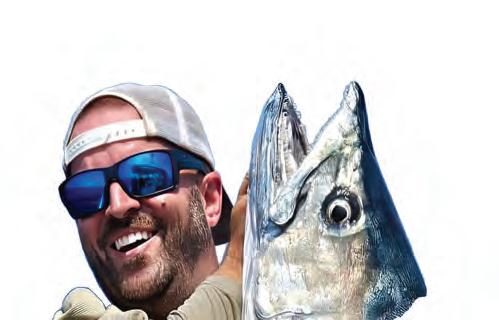

TIGHT BUDGET KINGS




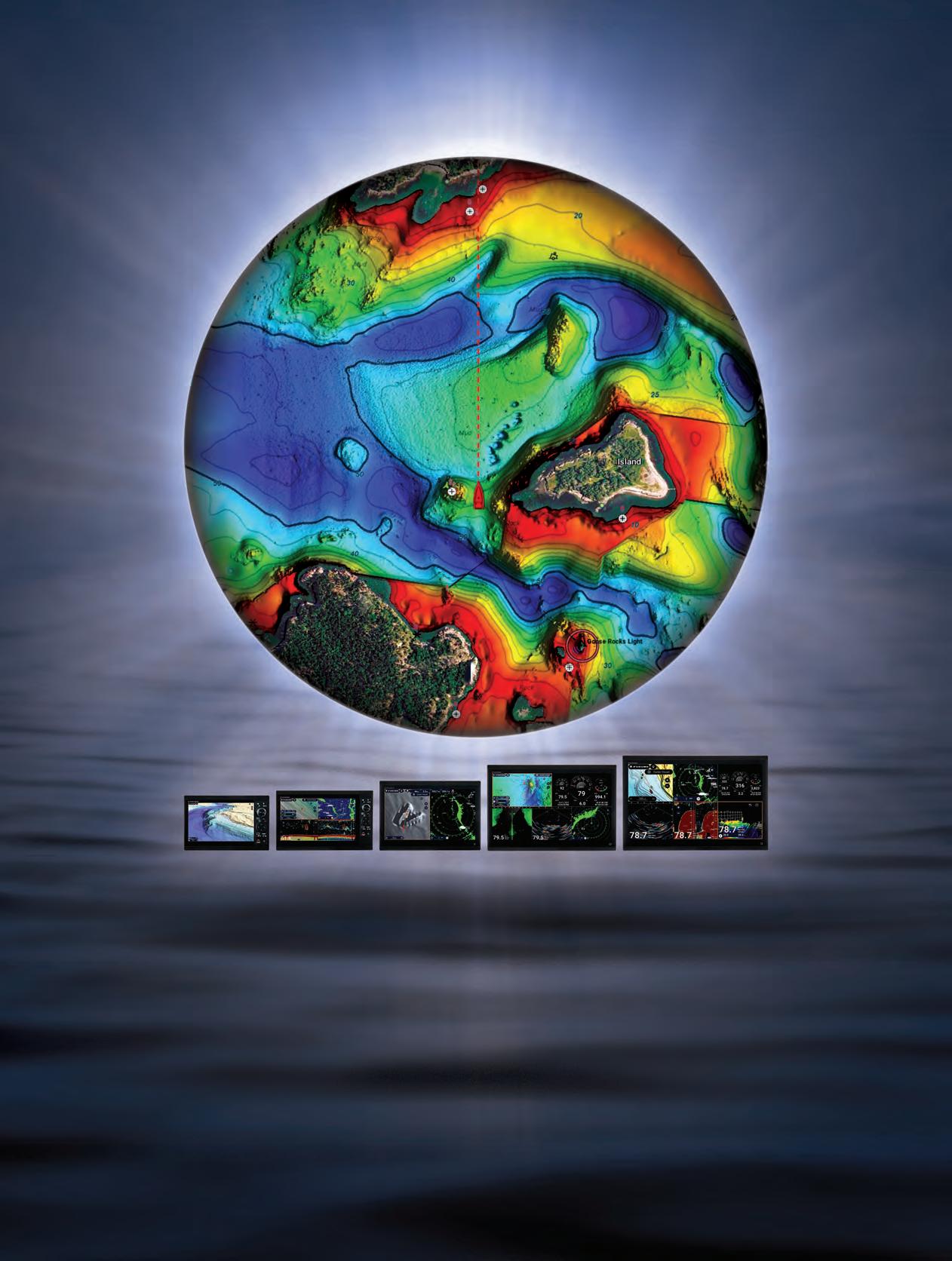
ou want new charts?
You got new charts! Explore the ocean with vibrant terrain & depth shading, using all-new TZ MAPS. Don’t just take our word for it. See for yourself. Scan here, and we’ll show you!











navigating peace of mind







THE IMPORTANCE OF BOAT INSURANCE
Embarking on the open water is an exhilarating experience, flled with the promise of adventure and relaxation. Whether you’re a seasoned sailor or a weekend cruiser, protecting your vessel with proper insurance is not just a choice—it’s a necessity. Explore the reasons why every boat owner should prioritize boat insurance for a worry-free voyage.
Unpredictable waters
The open water can be unpredictable, with unexpected storms, collisions, or other potential accidents. Boat insurance can give you fnancial protection if there is damage to your vessel, providing coverage for repairs or replacement.
Damage and injury
Accidents on the water can result in damage to other boats, docks, or even injuries to passengers. Boat insurance offers liability coverage, which can pay for damages or injuries you’re liable for while boating, up to specifed limits, and lawsuit costs if you’re sued. This includes damage you cause to another watercraft or if someone on or near your boat is injured and you’re found to be legally responsible.
Theft and vandalism
Unfortunately, boat theft and vandalism are realities that boat owners face. Boat insurance has comprehensive and collision coverage that can protect you against events outside of your control, including theft and vandalism.
Incurred medical payments
Accidents on the water may lead to injuries for you or your passengers. Boat insurance offers a range of optional medical payments coverage limits, helping to cover medical expenses if you are in an accident or someone is hurt on your boat, regardless of fault.
Peace of mind for fnancing
If you fnanced the purchase of your boat, most lenders require insurance coverage to protect their investment. Having boat insurance not only fulflls these requirements but also gives you peace of mind knowing that your fnancial interests are safeguarded.
Navigational fexibility


Some water municipalities and marinas may require proof of insurance for docking or accessing certain areas. Boat insurance allows you the fexibility to explore different destinations without worrying about entry restrictions.
Emergency towing and assistance
Progressive boat insurance can include optional Sign & Glide® On-Water Towing coverage. If your boat is disabled or breaks down on the water, Sign & Glide® pays for on-water towing, jump starts, soft un-groundings, and fuel delivery.
Wreckage removal
If your boat sinks, Progressive boat insurance will cover the cost of removing your boat from the water (if removal is legally required).
Investing in boat insurance is not just about protecting a valuable asset; it’s about safeguarding the memories, experiences, and joy that come with your on-water adventures. Don’t let unforeseen circumstances disrupt your journey—navigate with confdence, knowing that Progressive boat insurance has you covered. Ensure a smooth and worry-free voyage, because when it comes to your boat, peace of mind is the ultimate luxury.
Scan to get a quote in as little as 4 minutes
learn more.




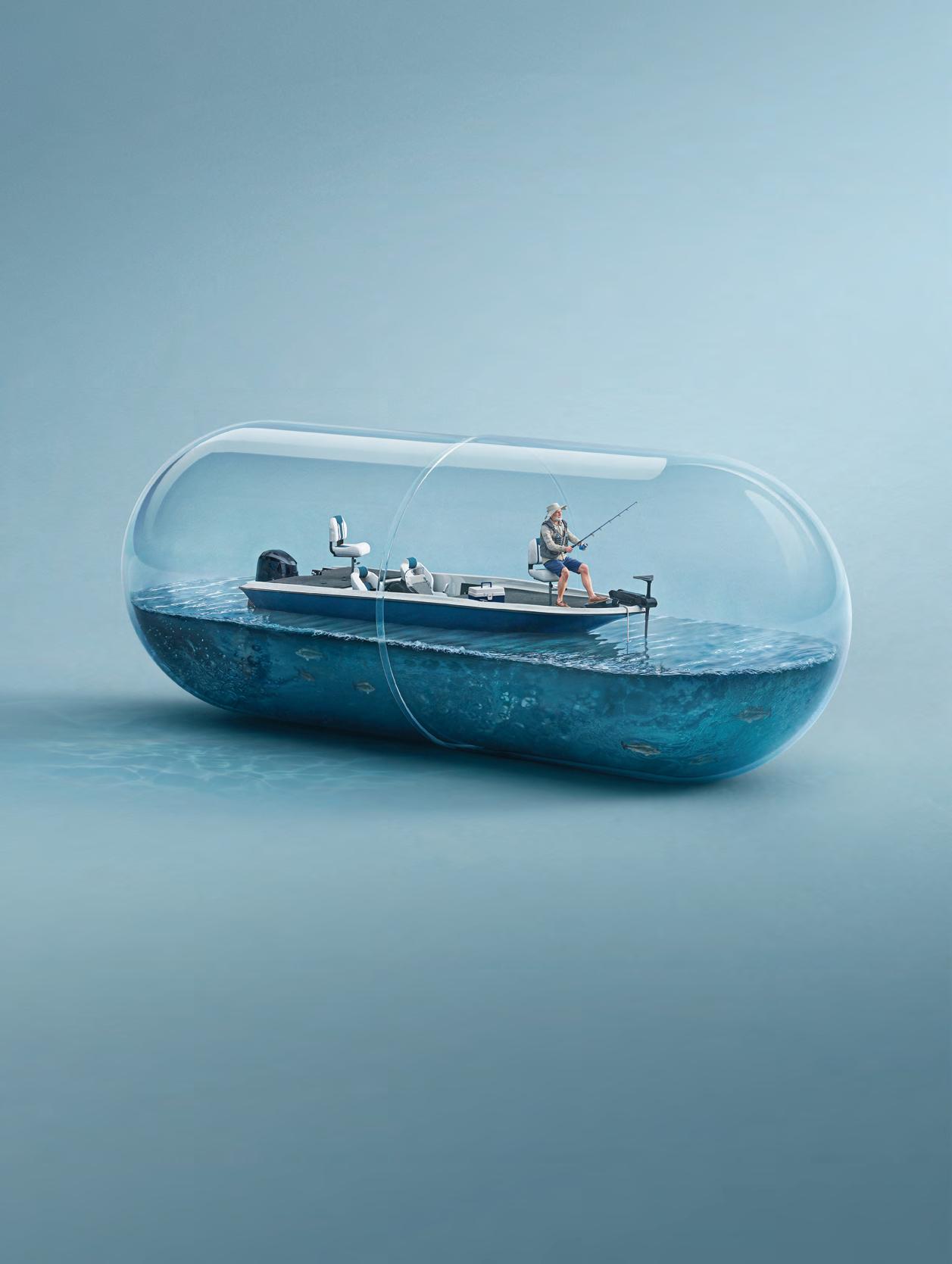
















FATHER’S DAY: THE PERFECT TIME TO FISH WITH YOUR KIDS
THATCH MAGUIRE, EDITOR AT LARGE

Father’s Day is one of the best opportunities to take your kid !shing.
It’s a celebration of the powerful bond forged when dads pass down the timehonored tradition of !shing, a tradition that stretches back thousands of years. While !shing once put food on the table out of necessity, today it still feeds something deep within us. at ancient connection to the water lives on in every angler, whether they realize it or not.
Inviting your son or daughter to !sh on Father’s Day regardless of their age makes a timeless statement. It bridges distance, mends di erences, and rea rms love in a way few other gestures can. Even if the day ends without a single bite, the act of !shing together creates a bond that words can’t express. It’s not about the catch. It’s about the connection.
ere are countless lessons a father might teach a child, but carving out time to share a quiet day on the water—free from the noise and distractions of modern life is one of the most meaningful. By saying, “Let’s !sh together today,” you’re also saying, “Let me share who I am with you.” And that’s a gi no one forgets.
Don’t have a son or daughter? No problem. Take any kid !shing this Father’s Day. Whether it’s a neighbor, a niece or nephew, or a friend’s child, the impact is the same. You’re passing on something real, something rooted in tradition, and something that could change a young life forever.
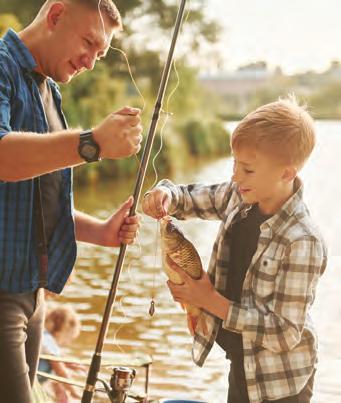









KINGFISHING
ON A SHOESTRING BUDGET
By Capt. Steve ompson
Targeting king!sh during their annual migration season o Florida’s east coast is a predictable event that coincides with the annual migration patterns of the Atlantic stock of king!sh. During the summer, anytime from midMay through August, when the water is warm enough for the kings to stick around, we all have a great chance of catching a tournament class king!sh, at almost anyplace we decide to !sh.
King!sh can be caught anywhere from the mouth of an inlet, on out to 200 foot depths, and that means that almost any seaworthy vessel can, and does, go a er these !sh during the “mostly calm” summer days.
Everyone has heard about the GJKT tournament winner that Fred Morrow caught at the tips of the north rocks, or Bob Johnson on his Traveler who won the aggregate, with two nice !sh, also right o the beach. What do these teams have in common? ey won in small boats with very little overhead, with very short runs to their !shing grounds. But they did their homework and had a plan, and went straight to where they were going to !sh. Because let’s face it, the small boater isn’t going to run all over the ocean chasing !sh that have already been caught. And those are not the only examples, this same scenario takes place every year
in tournaments up and down the Atlantic coast.
Another way to !sh on a budget is to not get caught up in the latest and greatest gear. Sure, you need quality equipment, but one can good used reels from friends, who are upgrading, or from yard sales or even at swap meets at your local o shore club.

As far as rods go, if you know what “feel” you like on your rods, you can !nd o name rods at sidewalk tent sales at your local tackle store, that perform as well as a custom rod, for a fraction of the cost!
To avoid buying that expensive bait, become pro!cient with a cast net! Kings get fat and happy on a steady diet of “pogies”, or menhaden found along our beaches. You need a heavy fast sinking net to have all the bait you want for a day’s !shing. No pogies, you say? Don’t worry, many king!sh over the years, have fallen to other baits than just a pogy. A pound of shrimp on tournament day could very well be a day saver. Croakers are great king baits, as well as blue runners and blue!sh. Ribbon!sh can also be used but are best caught a few days before and brined so they are easily trolled. If you like !shing the Party Grounds always have some sabikis on board. ese are small feathers on small hooks on a special rig that will catch fresh sardines and cigar minnows on most of the o shore reefs and wrecks.

Don’t be intimidated when you sign up to !sh any tournament. You have the same chance to catch a tournament winning king!sh as the next guy. And you do not have to drop big bucks to do so. Just do your homework, pre-!sh as much as possible and, come tournament day, have a plan and stick to it…and we’ll see you at the weigh scales!
Capt. Steve ompson is Chairman of Jacksonville Marine Charities / Greater Jacksonville King sh Tournament and a 40-year successful veteran of competitive king sh tournaments all over the Southeast. Contact him at (904) 251-3011 or email: gjkt@king shtournament.com.
Command The Water With Lowrance & Simrad
Whether you’re chasing trophy fish or charting your next offshore course, your time on the water deserves the best in navigation and marine technology. Defender brings you UNBEATABLE PRICES and EXPERT SUPPORT on Lowrance and Simrad electronics—trusted by professionals and weekend warriors alike.


The choice for powerboaters and sportfishers. Get crystal-clear sonar, radar, and navigation that keeps you locked on target.








–– George Thomas, Noted watchmaker & historian

Greenlight to A Deep Dive Without Going in the Red


Every year in Basel, Switzerland, the world’s best-known luxury watchmakers gather to display their new timepieces. It’s a great event for spotting timepieces that standout–– in performance and in personality. We saw one impossible to ignore: a precision dive watch with an arresting green dial. But we also saw the five-figure price tag and knew we could bring our customers that exact same precision and stand out appeal for a whole lot less. The Stauer Evergreen Diver is that timepiece.
Built like a submersible battleship with a stainless steel case, caseback, and band, the Evergreen Diver is water-resistant down to 660 feet or 20 atmospheres, a feat facilitated by a hardened crystal and screw-down crown.
Green On Your Wrist AND In Your Pocket. You could pay an awful lot elsewhere for this verdant virtuoso, but the majority of the cost is in the big designer name upcharge. We think those guys are all wet. This is how you own a top-of-the-line dive watch without helping pay for some marketing guy’s yacht.


Satisfaction Guaranteed or Your Money Back. Wear the Evergreen Diver for 30 days. If you’re not completely happy, send it back for a full refund of the item price.
Limited Reserve. A watch of this caliber, with a price that won’t drag you under, takes 6 months to create and won’t stick around for long. Call today!




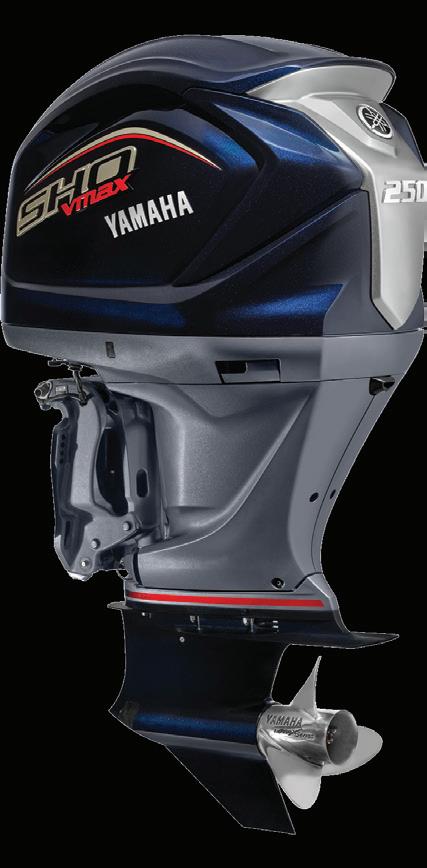



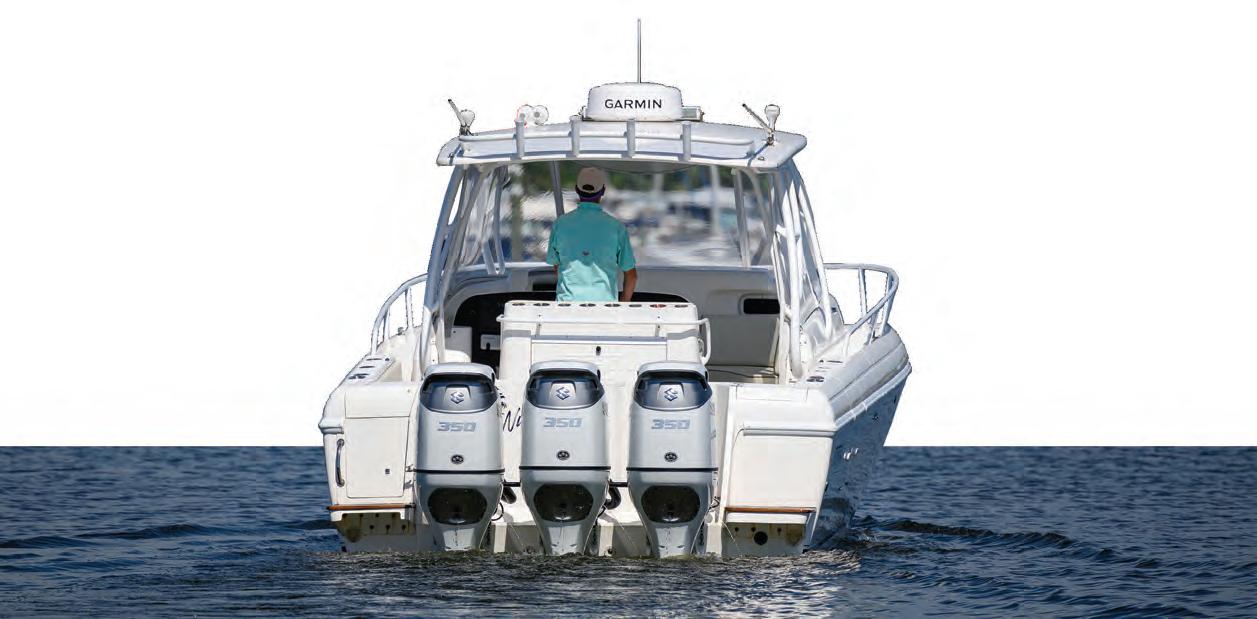









SPEND LE TIME ON TASKS More Time Fishing
It’s no fsh tale when you run with a John Deere. You can get everything done faster and easier, so you get more time on the water. Plus, our special offers make them the catch of the day.




RECORD 126-DAY GULF RED SNAPPER RECREATIONAL SEASON SET FOR 2025
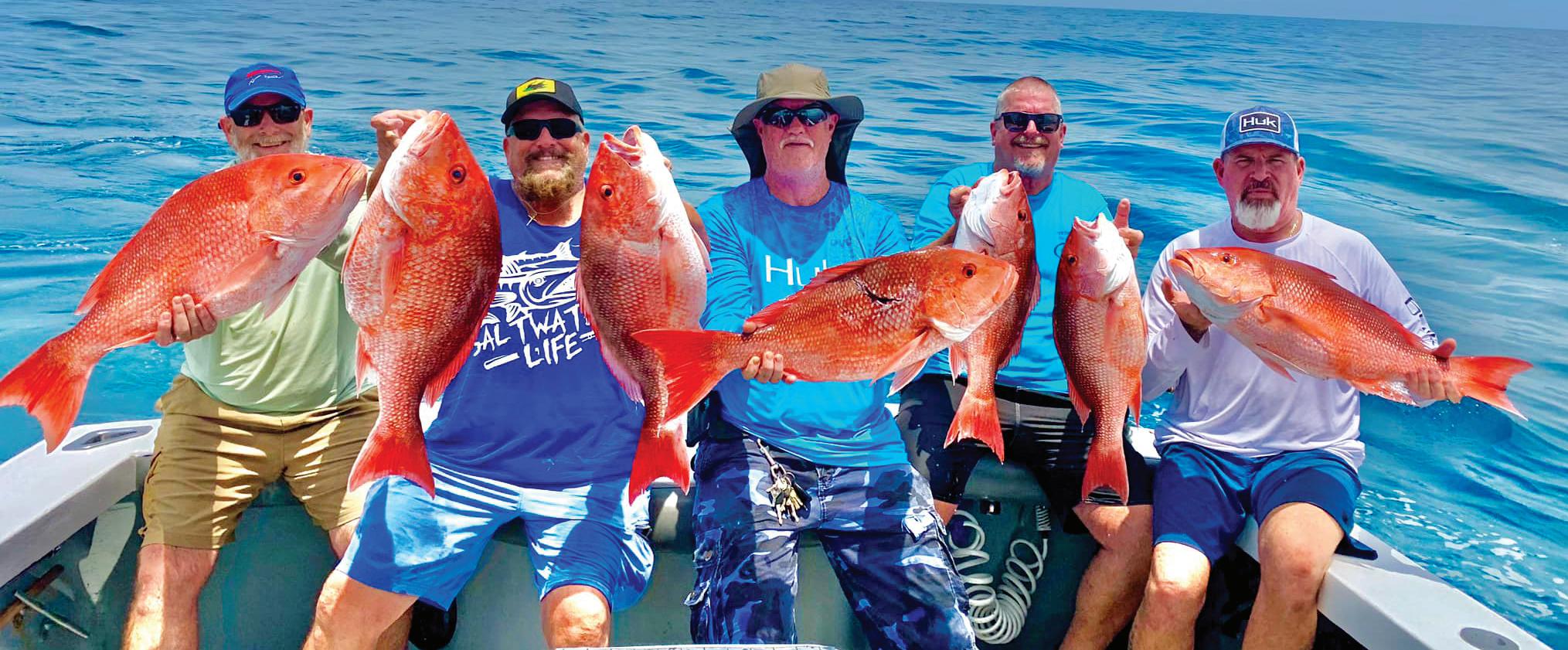
Arecord-breaking 126-day Gulf red snapper recreational season has been set for 2025, the longest season since Florida assumed management of Gulf red snapper. e expanded season includes additional summer and fall shing days from 2024, o ering anglers more opportunities to sh over major holidays such as Memorial Day, Independence Day, Veterans Day, and anksgiving.
“Florida is the shing capital of the world— with 4 million licensed anglers and generations of families who enjoy our waters. A er setting a record last year, we’re doing it again with the longest Gulf red snapper season in state history, giving Floridians and visitors even more time to
sh on Florida’s waterways, said Governor Ron DeSantis.
“ e Gulf recreational red snapper season is a highly anticipated and celebrated event for anglers nationwide, emphasizing Florida’s exemplary shing resources,” noted Florida Fish and Wildlife Conservation Commission Executive Director Roger Young. “ is record-long season results from the strong data collected through the State Reef Fish Survey, which Governor DeSantis, the Florida Legislature, and our recreational anglers have consistently supported.”
e 2025 Gulf red snapper season is open to those shing from private recreational vessels or charter vessels. e summer season began over

Memorial Day Weekend, and reopens June 1 through July 31. e fall season will include the following dates:
• September 1 –14
• September 19 – 21
• September 26 – 28
• October 3 –5
• October 10 – 12
• October 17 – 19
• October 24 – 26
• October 31 – November 2
• November 7 – 9, 11 (Veterans Day)
• November 14 – 16,
• November 21 – 23
• November 27–30 ( anksgiving weekend)
• December 5 – 7
• December 12 –14
• December 19 – 21
• December 25 – 28 (Christmas weekend)
Florida’s ability to o er this extended season is made possible by the data-driven management approach of the Florida’s State Reef Fish Survey (SRFS).
In the event of weather-related closures impacting the shing days, Florida will evaluate the option to add additional Gulf red snapper dates later in the year.
Anyone shing for red snapper from a private recreational vessel—in state or federal waters— must be registered as a State Reef Fish Angler (with annual renewal), even if exempt from shing license requirements. Registration is available at GoOutdoorsFlorida.com.
For more on recreational snapper regulations, visit MyFWC.com/Marine.


PHOTO COURTESY OF FIRED UP FISHING CHARTERS
POPPING CORKS & KIDDOS: A JUNE FISHING TRADITION
What are the best parts of June? School’s out, the days are long, and I get to hit the water more o en with my boys. It’s become a tradition in our family: pack the cooler, grab the rods, and head out chasing tails under the summer sun. Our not-so-secret weapon? e always-reliable popping cork.
Now, I won’t try to name every cork on the market (we’d be here till next June), but I’ll share our go-to setup and a few tips to help make your next trip smoother—especially if you’ve got little anglers in tow.
Let’s talk bait. Live shrimp is our MVP, but dead bait and lures get their time to shine too. Lures tend to keep the “bait bandits” away, but if it’s a slow bite, those pesky nibblers become the stars of the show. My kids think a croaker on the line is just as thrilling as a red sh.
We o en dri or anchor near structure when there’s bait ickering around. Dri ing can be tricky with kids who haven’t mastered the long cast or slack control. Two tricks help here. First: the circle hook. It sets itself (less work for little hands) and does minimal damage if you need to release your catch. Plus, in the chaos of a dri ing boat, it’s more forgiving when someone forgets to keep tension on the line.
Second: skip the loop knot for your cork and
hook. Loop knots are excellent—just not here. ey add slack where you don’t need it, and with junior anglers on deck, less slack means fewer tangles and missed sh.
Now to the main event: the cork itself. A er decades of experimenting, I’ve fallen for a newer model—a hard plastic, deep-cup, rattling, popping cork. It’s heavy enough for my boys to cast like champs, even into a headwind. No wires, no wind tangle nightmares, and it ies like a bullet. e built-in rattles add the right commotion to call sh in without scaring them o . And that deep cup? It creates that irresistible slurp-splash sound with almost no e ort. Perfect for young anglers still guring out the rhythm.
One last tip—transport like a pro. Most folks clip the hook low and let the cork bounce up top, opping around and waiting to poke someone. I reverse it: secure the cork down by the reel, wrap the leader around the handle, and clip the hook up high. No ex, no loose hooks, no surprise piercings.
So grab a few snacks, load up the boat, and hit the water. June’s waiting—and the popping cork’s ready to work its magic.
Capt. Michael Okruhlik is the inventor of Knockin Tail Lures®, and the owner of www.MyCoastOutdoors.com.
By Capt. Michael Okruhlik
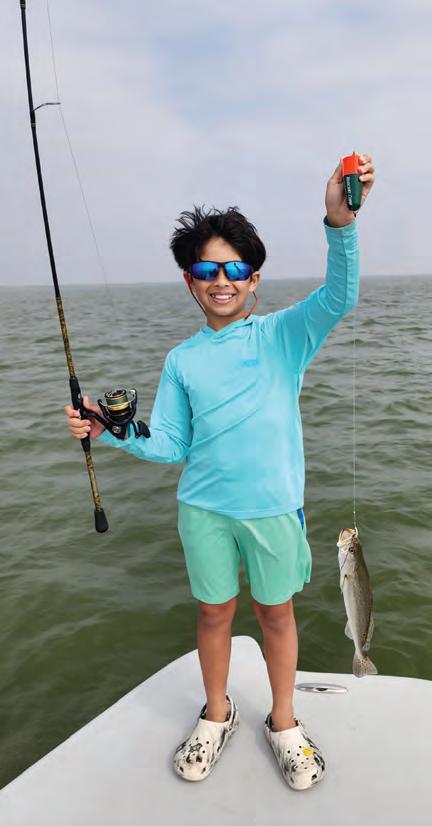



PHOTO COURTESY OF KNOCKIN TAIL LURES®.

TARPON TIME
By: Caitlyn Gatrell

Tarpon fishing is in full swing in Southwest Florida! These majestic beasts make their way around our area every year, even with some still sticking around in the winter months. But the best time of the year is here as they are migrating heavily near and are ready to eat.
We’ve recently had the pleasure of seeing them roll around the mangroves, flats, channels, backwaters, and points. It's quite the sight when you see a bunch of them rolling around, gulping air, and even free jumping after bait. We have had times where we got them to strike on artificial bait, and I know others have had good luck as well, but we prefer to use live bait. Our goto are finger mullet, pass crabs, and pilchards. At times if we can get a smaller ladyfish we also may throw a live one out the back and slowly troll it.
Tarpon fishing consists of a couple things. First, it's pretty quiet, yet peaceful. We stay quiet in hopes of hearing them roll or splash around us so we can locate them. We also switch between throwing a bait out and letting it sit in the rod holder, versus actively holding our setup ourselves. If it's quiet and calm, usually we let a few lines sit out and patiently await some activity. If the area is already active, we’ll cast, keep a finger on the line, and wait for
that thump. To me, it's a little more exciting to feel it go off in your hand, especially when it hits you hard and suddenly. Another thing to keep an eye out for is any bait that seems to be getting chased or swirls and wakes around the surface. While this does not guarantee a tarpon, it's a good sign!
My favorite time to go tarpon fishing is in the evening, as the fish activity is often high and the surrounding skies and waters are quite stunning. First things first, we head to our area to stock up on some fresh, live bait, and then we hit various spots before the sun goes down. I've said it before, but fishing in the evening around a flowing incoming or outgoing tide is always my go-to adventure. I find the most excitement and opportunities for hookups when I go around this time, tarpon especially. When we do get hooked up to one, whether it's myself or someone else on the boat, it's an awesome battle to watch. There are tons of drag screaming, flying jumps, and runs to take in. Plus, seeing that gorgeous fish up close, and admiring its strength and beauty is another awesome feeling! If you haven't caught a tarpon yet, either ever or this year, this is your sign! Summer fishing for Tarpon is waiting for you. I wish you tight lines.
My Two Cents on Boat Rage

By now we’ve all seen the incident that took place up in Punta Gorda between “the best charter captain in the world” and a kid fishing by himself under the Byron Collier Bridge. A bunch of thoughts are running around old Tim’s head. Here they are in no particular order.
W hat sort of irrational, ignorant, backwoods is boat rage? If you’re wound so tight you snap while out on your boat, you have no business being on it. Stay home, sit alone in your garage with the door closed and the lights off, and save the rest of us from dealing with your idiotic behavior. Out on the water you need to be rational, safe, and present an image of capability, cooperation, and safety to others. Period. Besides, your goal is to have fun, not to deliver any knuckle sandwiches.
Claiming to work three hundred days a year on the water doesn’t sound like something coming from someone 100% disabled. The news reported this individual suffered brain injuries while in the service and is considered completely disabled. The question becomes is his disability mental? Was his brain injured to the extent he is not safe to be around? Does the injury cause his temper to go from simmer to boil in an instant like we all saw? Does it cause aggression and irrational behavior? Is that why he boarded that kid’s boat with the intent to either harm the kid or scare him half to death? Should he be allowed to take strangers out on a boat thus isolating them from a way of egress if his aggression turns toward them or his mind completely cracks?
Does that hopefully former captain understand his act of what I consider piracy? He boarded another vessel at sea with hostile intent. Does he understand that by doing so he also abandoned his own boat and the paying passengers that were his responsibility? It’s not like they were any great humanitarians or helpful in any way. As “Captain Composure” flew into a ridiculously prolonged rant followed by a rage-induced stunt, the people on his boat sat with their thumbs, in military terms, up their “fourth point of contact.” I watched the video in stunned silence and realized they did the same thing, only they were there and failed to intervene. If all of them were combat vets as the captain proclaimed, they should have some experience with evaluating a threat and “escalation of force” and should have said something. Did they forget the term “de-escalation?” One of them even works in emergency services, but he sat there completely useless without saying even so much as “hey, calm down.” How safe does that make you feel?
How did this dude get in the service in the first place? The news explained his prior history as a law-breaking knucklehead with impulse control, so how did he manage to join the army? What does being a combat vet have to do with fishing under a bridge in Florida? I’m a combat vet and I don’t think I ever told anybody about it while out fishing. Who said this guy wasn’t the best charter captain in the world? Why was he absolutely convinced the kid was lying and didn’t take even five seconds to consider what the kid said was true? Would he have been
so tough in a one-on-one situation? Would he have been so animated if he didn’t have the audience on his boat? The terms “unhinged” and “deranged” come to mind. Does he realize that his actions put an unfair stink on other charter captains? And aren’t they supposed to know the rules? The guy claimed he didn’t have to slow down to go through the bridge, but that is not the law.
Sure, the guy’s lawyer says he apologized. Right. That sort of apology is about as weak as Will Smith apologizing to Chris Rock on Twitter after slapping him at the Oscars, rather than facing him in person, humble and contrite, explaining his actions and apologizing to him. In my book, someone else apologizing for you is not an apology. Further, the lawyer wants people to consider his disability status as an excuse. Nonsense. All that does is make people wonder if a guy considered 100% disabled because of brain injuries should be around other people and responsible for their safety.
The kid on the other boat was caught unaware, but I bet he learned a valuable lesson. Never let someone with hostile intent close enough to board your boat. Why did he let “Captain Calm Cool and Collected” get close enough to board? A little distance between boats would have helped. Ironically, while I hate the fact that today’s younger generation is so lost to narcissism that every experience is worthless unless uploaded to the internet for clicks and other forms of anonymous validation, this time I’m glad the kid recorded the entire unfortunate event and put it on social media.
The charter captain is lucky he didn’t pull that stunt down in the 10K Islands or on an adult who likes to exercise their constitutional rights. Several people I know arm themselves for “just in case” situations down in the Ten Thousand Islands and Everglades National Park. I’ve had a CCP for years and Mr. Glock loves to spend time in the comfort of my leaning post.
In the end, I don’t wish any ill will toward that man, but I do believe actions have consequences. They should reevaluate his disability status. I know many servicemen totally disabled and they can’t even leave their houses let alone jump from one boat to another in an inappropriate fit of rage. If he has mental issues he should get treatment. However, I think this is another episode in a pattern of misconduct that should not go unpunished, including for all the threats he made. Call it the “law of unintended consequences.”
I t hink another charter captain said the coldest, yet most honest comment on YouTube about the whole situation. In referring to the “best charter captain in the world,” he looked calmly into the camera and said “dude, you’re not one of us.” Shunned by his contemporaries. That’s brutal.
Well, that’s my two cents on boat rage. Maybe more like a dollar. See you out there!
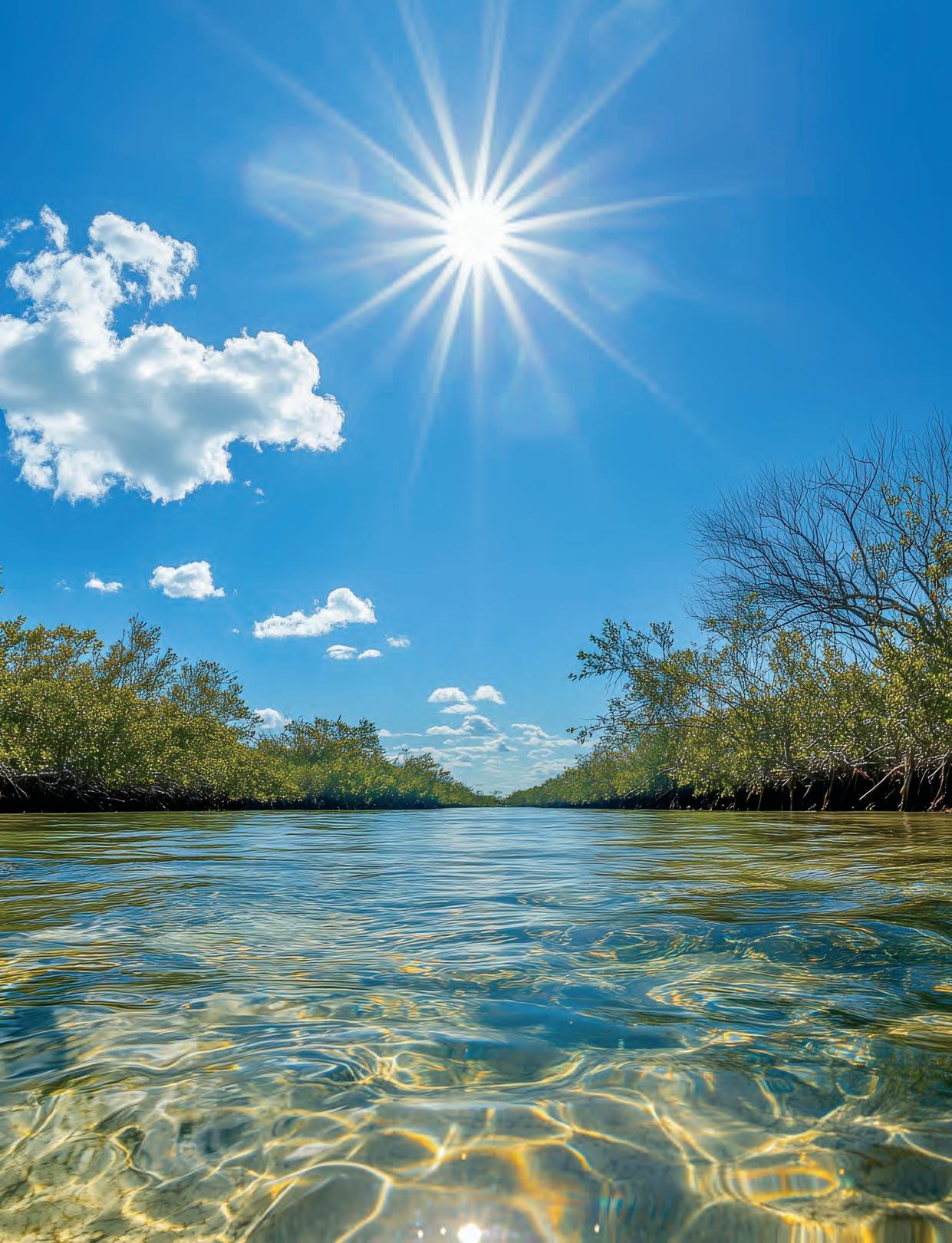
By: Capt. Tim Ramsey



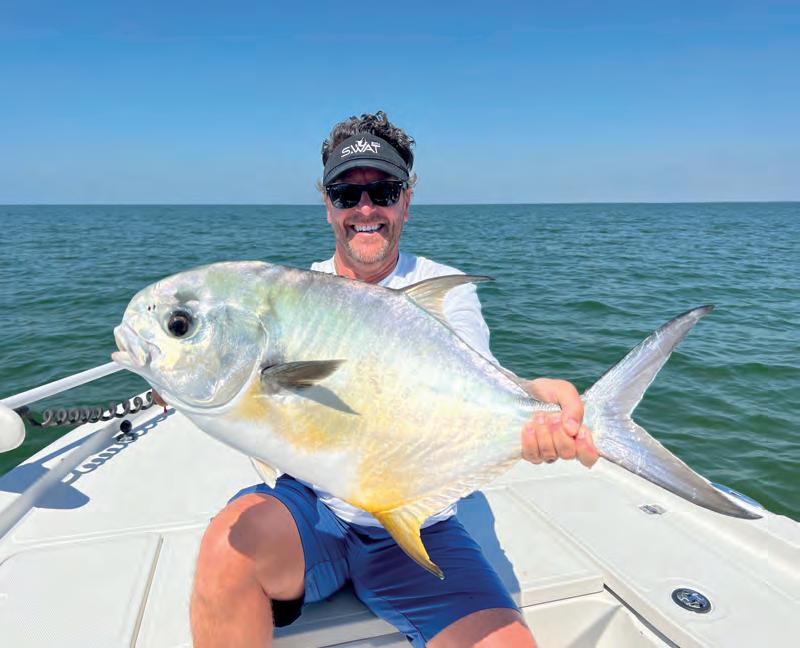
From Sea to Sizzle
By: Jessica Hendrie
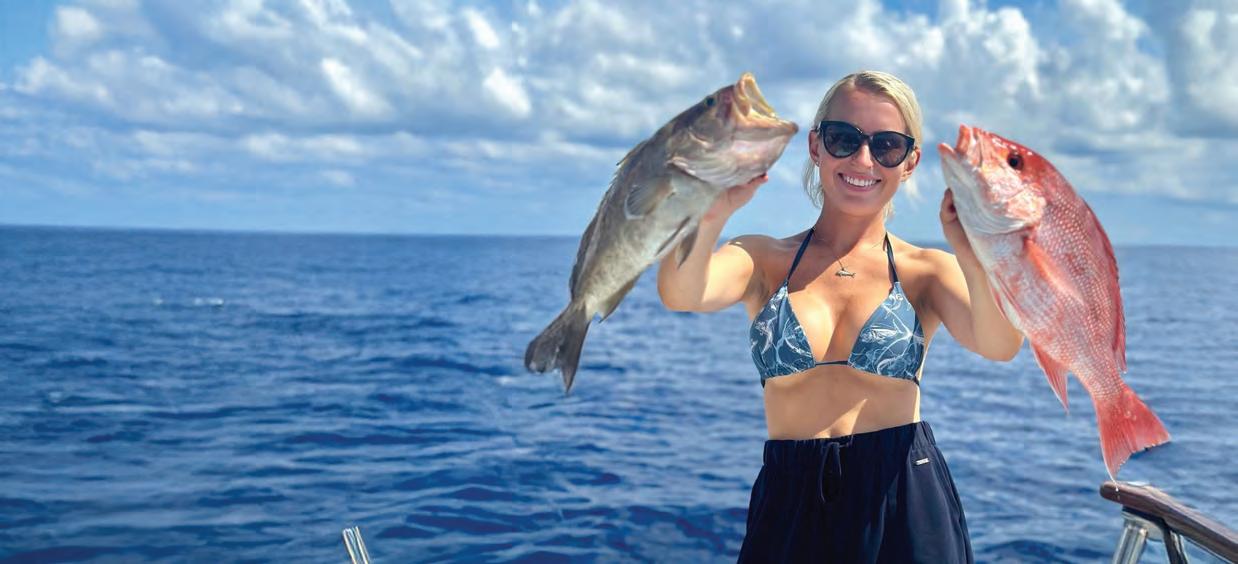
What’s your favorite fish to catch? As much as I love them all, I have been particularly loving red snapper season each year! It makes my mind jump straight to the kitchen or boat! There’s just been something special about that time when fresh, flavorful snapper is in abundance, ready to be turned into something yummy that brings my family and friends together. Red snapper are a dream to cook. Their firm texture and semi-sweet flavor make it perfecto for a variety of dishes. Each time I bring it home, I’m so excited to start experimenting. One of my go-to meals is grilled red snapper with lemon and herbs. A quick marinade of olive oil, garlic, and lemon juice then straight onto a hot grill, it’s light, fresh and full of flavor. It’s a summertime favorite at my house. Another staple? Red snapper tacos! I season the fish with a smoky Cajun rub, then pan-sear it until crispy on the outside and juicy and flaky on the inside. Wrapped in a warm tortilla with crunchy slaw
and creamy avocado, it’s the kind of meal that disappears fast around here. For something a bit fancier, I’ll roast a whole snapper in the oven. Stuffed with lemon slices, thyme, and a few pats of butter, it’s as beautiful as it is tasty, and it always impresses dinner guests, and my husband, as always! Of course, no red snapper season is complete without a classic fish fry. Lightly battered, golden, and crispy, served with hush puppies and coleslaw, it’s a Southern tradition I never skip. We get together a few times a year just to do this and I look forward to it just the same every time. Red snapper season isn’t just about the fish to me, it’s about the experience. It’s about gathering with friends and family, sharing meals, and making memories around the table. Whether I’m out on the water or in the kitchen, I look forward to this season all year long. What about you?



Springtime Fishing Pattern
by Capt. Billy Norris
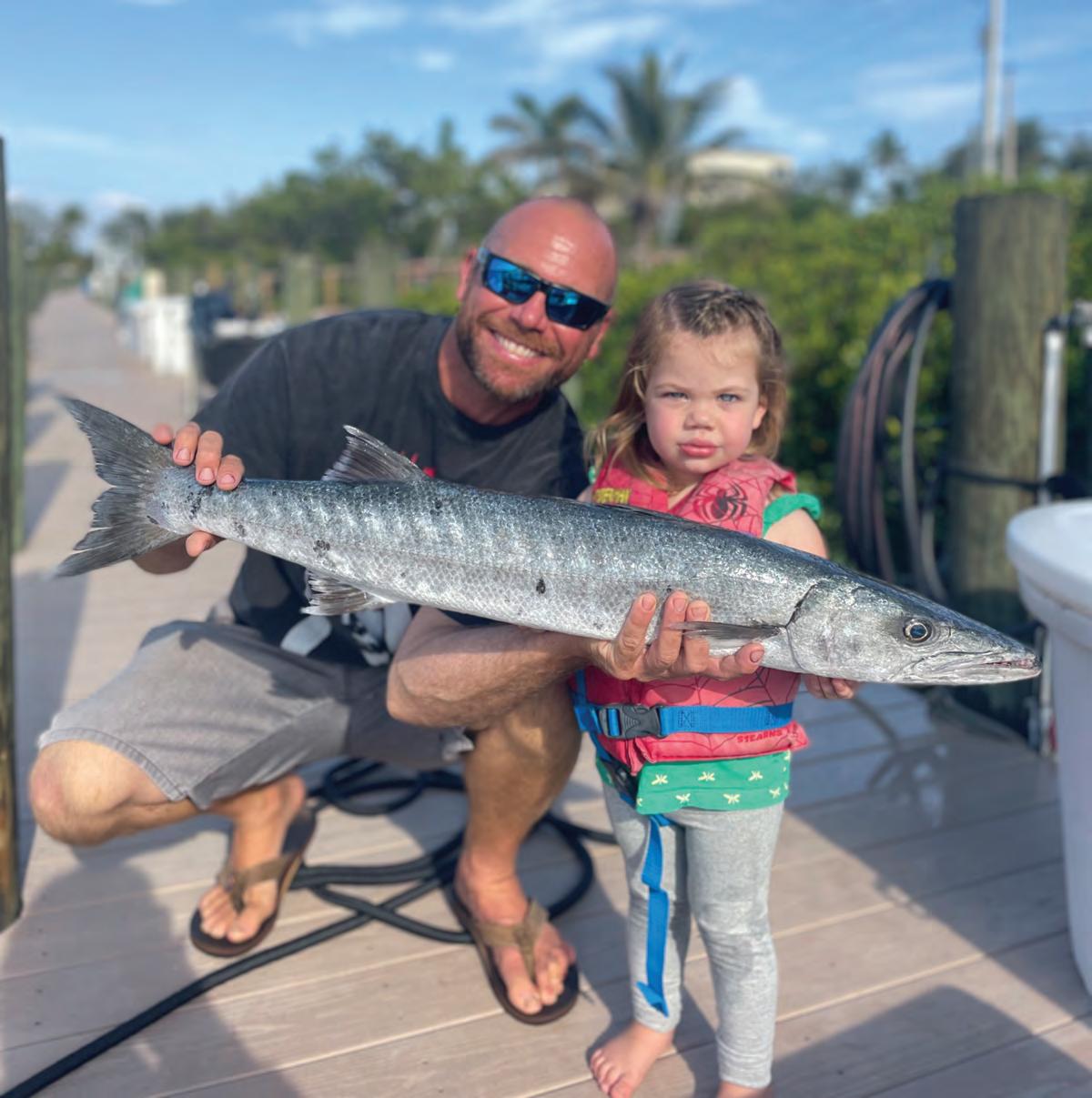

Few places on earth offer the caliber of fishing that we have available to us here in Southwest Florida. As we move out of winter, we are coming into one of the best times of year to get out on the water and catch some quality fish and fishing this past month has been excellent! Even though we have been plagued with more days of high winds and seas this year, we have still been putting plenty of big fish in the boat. Offshore and backwater have been stellar, and will only continue to get better as we move into our springtime fishing pattern.
The backwater bite has been great. The big 3; snook, redfish, and tarpon, have all been active as the water temperature starts to slowly creep up. Over the course of the past month, the Gulf temperature has hovered right around 70 degrees, causing fish to not be as lethargic in the backwaters. As far as bait of choice in the backwater, live pilchards or threadfins are the way to go. As the fish become more active, they will be less inclined to take slow moving baits like shrimp over a rapidly moving offering like a live whitebait. There have also been large schools of pompano around on the flats as well as in the deeper cuts. Target them with pompano jigs or a shrimp tipped jig for best results. As is typical for this time of year, there have been plenty of sharks in the backwaters if you feel like hearing your drag scream.
Offshore has been on fire! The kingfish finally showed up, a few months late this year, and we have been catching some beautiful kings. With the kingfish, come the sharks and they are big sharks! Over the past month we have landed multiple sandbar, bull and lemon sharks over 7 foot long. In addition, we scored some big tigers and hammerheads. The snook bite nearshore has been the best I’ve seen in years! The 28-33 inch slot window is incredibly tight, but we have been catching a bunch of them in the slot this past month. Usually, we get a bunch that are overslot, and a million that are under, but for whatever reason the keeper sized fish have been plentiful this year.
Cobia have also been fired up this last month and targeting them on both wrecks and reefs, we took home a lot of nice “brown clowns” this month. Cobia will eat basically anything, but they do have their preferred baits of choice. Hard to beat a nice big piece of cobia for dinner!
Overall, the fishing has been great this past month. I expect that it will continue to get better and better as we move into spring. Over the course of this month, Pale Horse Fishing Charters will be running trips out of Big Pine, in the Florida Keys for tarpon. Come on down and come out with us and see how we do it!


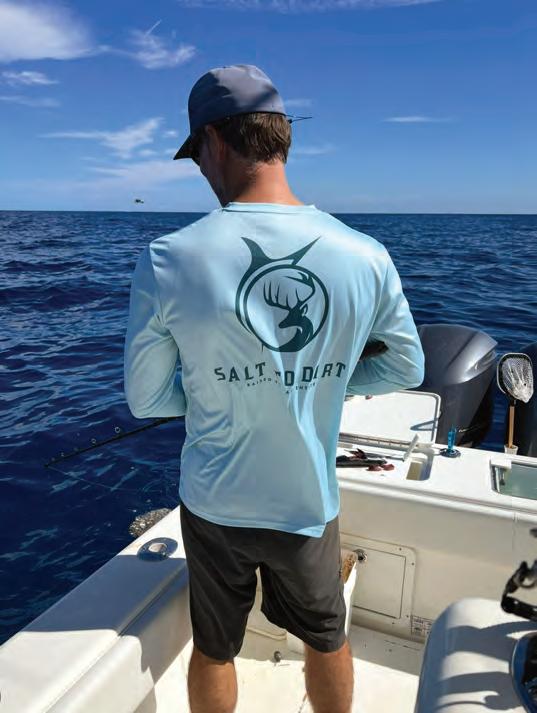
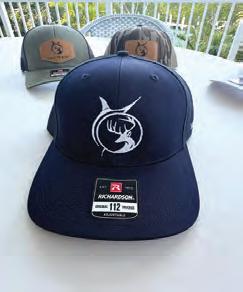



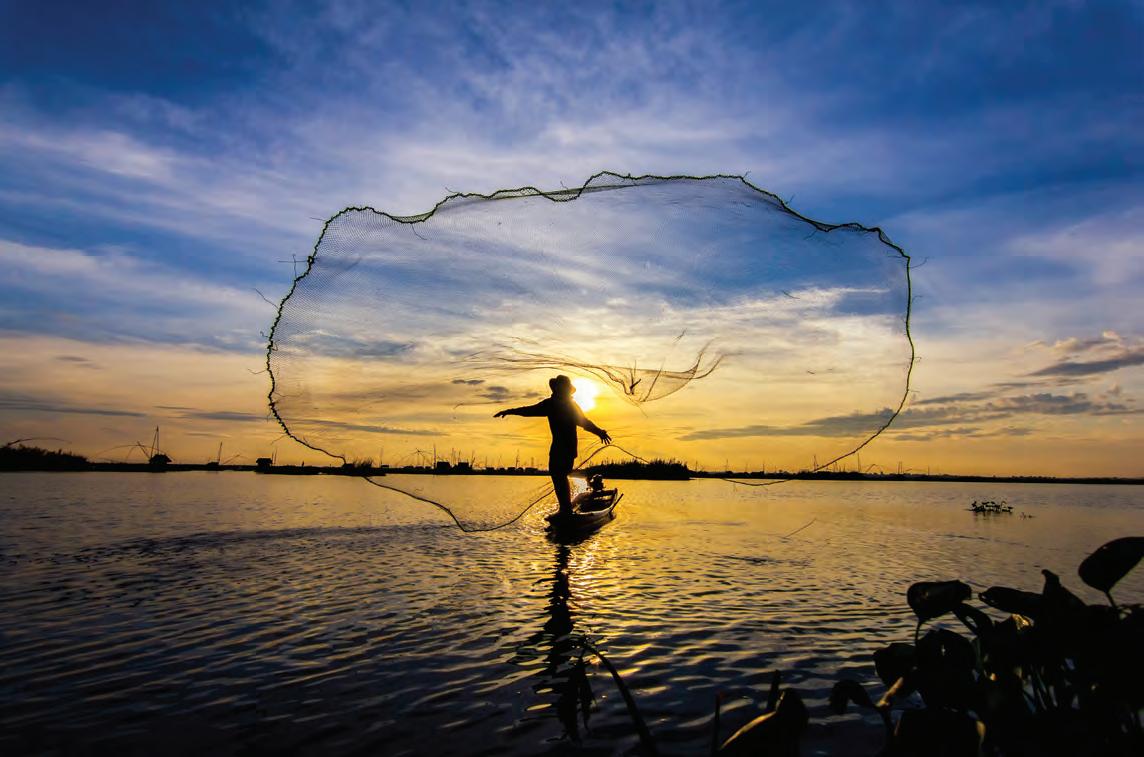


3
5
8
9
12
13
16
18
19
20
21
22
23 Mon 12:47 2.2 11:26A
24
25
26 Thu 3:19 2.3 1:58 3.3 7:59 1.4 9:15 -0.7 6:35 8:23
27
28
































































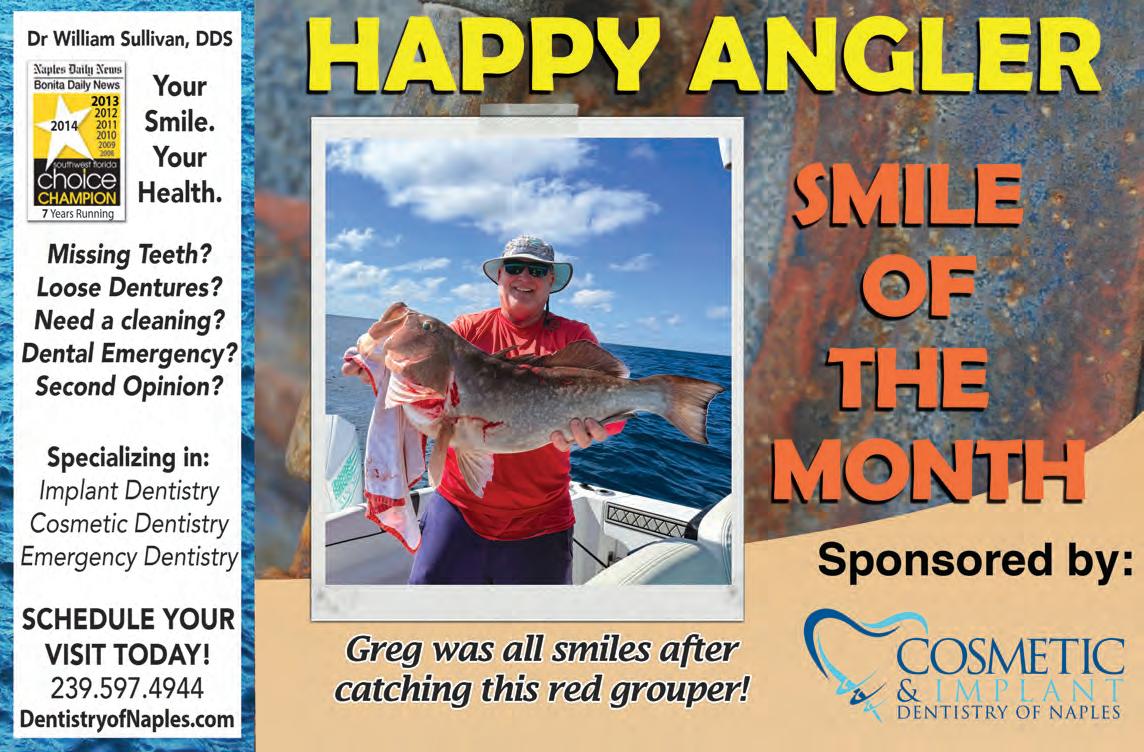
1
2
5
9
12
13




















18
19 Thu 8:18 2.0 8:54 1.7 2:07 0.6 3:03 0.5 6:33 8:23
8:55 2.1
20
21
22
23
24 Tue 1:47 1.7
25
26
27
28
29













































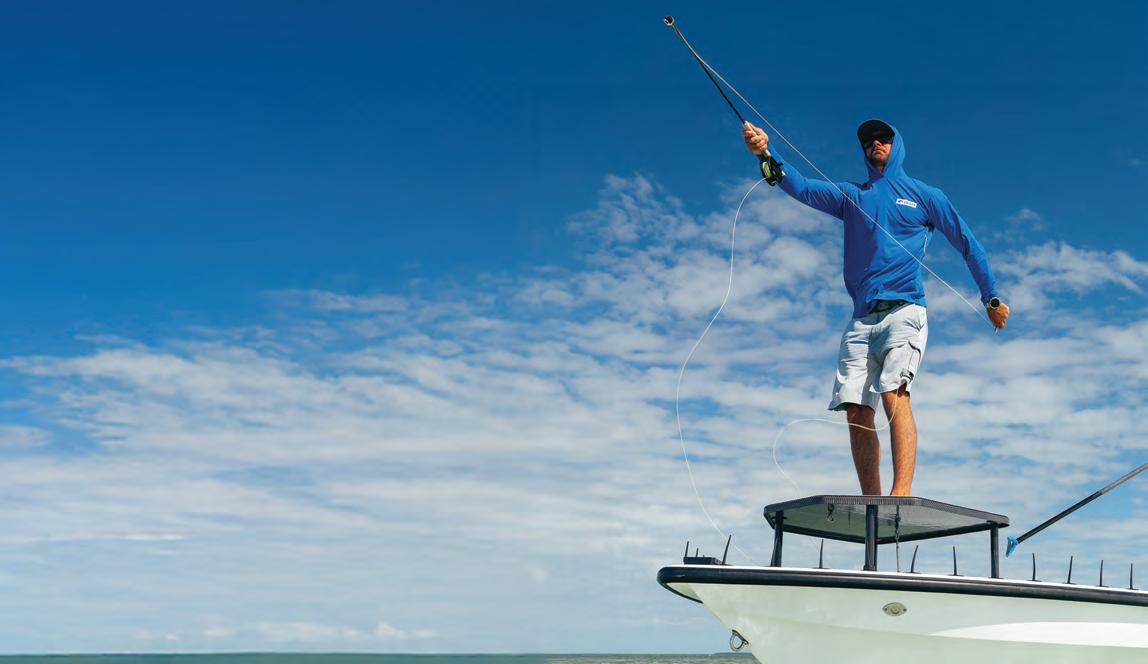
Castnets and Livewells
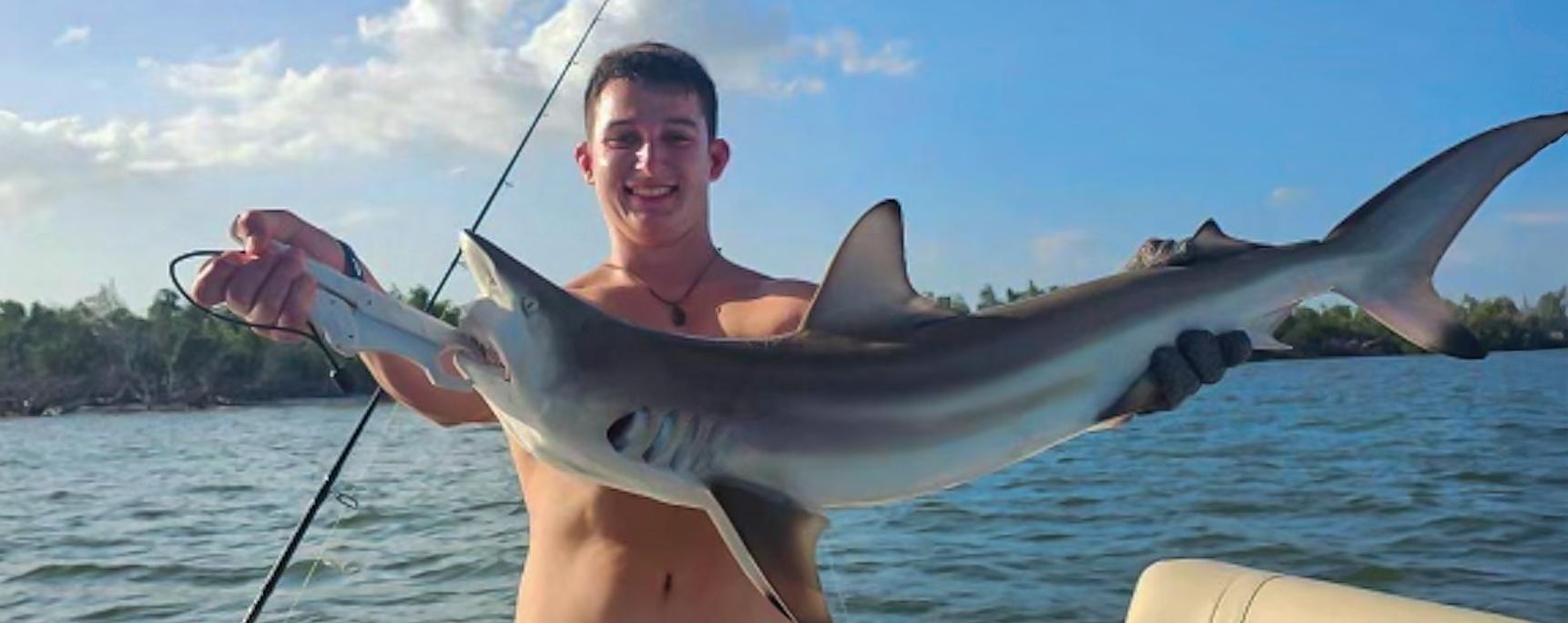
By: Capt. Bart Marx
The waters have warmed up nicely and the bait has moved into the local waters and is easy to find. Look around the channel markers and near the edges of the bars that have grass on them. This time of year, most of the guys that throw a cast net throw a ten foot with three eights mesh. This type of net is good to use in waters up to fifteen feet deep. You may have to use some chum to get the baits to ball up so you can throw the net over them. After you have succeeded in this process it is very important to have a good live well. A good live well shape is an oval or round, if it is a rectangle the corners need to have rounded corners so the baits don't run into the walls with their noses this will kill your baits. A forty to fifty-gallon oval live well will hold enough live bait to fish and chum all day. There is another factor the live well needs a good water pump to suck in fresh sea water to keep them alive. There are several different sizes and they are rated by GPH gallons per hour. Most pumps have a five eights discharge to put the water into the well and have an adjustment to push the water
around so the baits can swim around in the tank. Once your boat is in position, start chumming. When things get active, cast a bait into the strike zone and find out who is hungry. During this month, there is a great possibility to catch an inshore slam; snook, red, and a trout. If you happen to catch a tarpon this is an inshore grand slam! Snook are in the pre-spawn mode moving from their regular habitat out to a little saltier place to spawn and they will be moving around and hungry. Offshore, there should be plenty of snapper to harvest around fifty feet, also look for lane and mangrove snapper. Yellow tails eighty to one hundred feet. Yellow tails can be chummed up around a wreck or an artificial reef that has good structure to hold them. The lane and mangroves like to hang around natural bottom with a good ledge. Keep your eyes out as the man in the grey suit, nicknamed the tax collector better known as shark, will be in the area all summer!






ALL IN THE CAST
By: Joe Sheaffer

As we enter the summer months, the heat rises along the Southwest Florida coastal areas and the fish are in transition. Our inshore species are looking for areas that allow them to get out of the heat. Many anglers opt for early morning fishing opportunities, and will use top water lures to find fish lurking in the shallows before the sun gets high in the sky. Once the sun is up and the day heats up the shallow water bite usually gets tough. Many anglers call it a day and head home as the morning warms up. Many fish like redfish and snook head for cover, like mangroves, docks, and bridges to escape the heat. Knowing where the fish are is an advantage but fishing around different types of cover can be a challenge. Presenting your lure or bait around tight and sticky structures can be frustrating. I have had
my share of hang ups and break offs, too many to count! Being able to make accurate casts along or under different types of structure can be a huge advantage in a successful day of fishing or a day of frustration. Whether we use lures or live bait, making the right cast in potentially fishy areas can be the difference in getting a fish to bite. I love to skip baits under docks and mangroves. I have spent many hours working on this technique and have confidence in making an accurate cast. A great cast doesn’t guarantee a bite every time but your odds of catching a fish will increase. I could spend a long minute explaining how to skip a lure, but YOUTUBE has many different anglers and lessons on casting. I would encourage you to check them out. Good luck and keep casting!
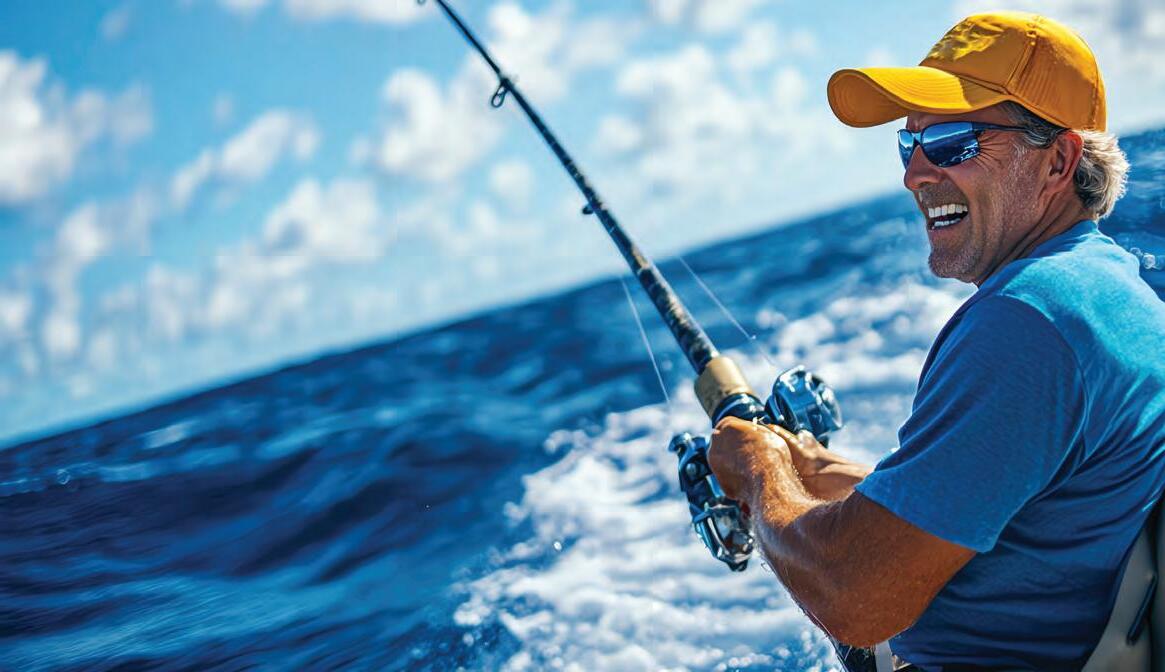





Kayak Fishing
By: Eric Henson
June is prime time for tangling with tarpon, and if you’re hitting the water in a kayak, you’re in for one wild sleigh ride. These silver kings roll through the shallows and passes this time of year, crushing baits and giving anglers the kind of fight that will keep you drooling for more. We’re talking about bruisers over the 100-pound mark, jumping like missiles and pulling drag until your reel is screaming like it’s going to blow up! In a kayak, one hookup can turn into the ride of your life! You better hang on, because when they take off, you’re getting towed whether you like it or not. One morning, I was towed 5 miles down the beach and then 3 miles back before landing my well over 100lb tarpon!
For the best success on larger migratory tarpon, hit the water at dawn or dusk when the tarpon are here. Look for them rolling near bridges, passes, or beaches where the bait is thick. Rig up a stout spinner with 50-80 lb. braid and a strong fluorocarbon leader. Their mouths are like sandpaper, and if you’re tackle is not up to par, you’ll get busted off fast. But if you like playing with light, tackle, you can target the smaller ones in the back waters and have just as much fun!
Live crabs or mullet are probably my favorite baits, but if you’re throwing artificial, go with big soft plastics or jerk baits that mimic the hatch. Keep your gear tight, and when they jump, bow to the king dropping that rod tip to keep the line from popping off.
Please don’t forget your PFD, and rig up an anchor trolley so you can swing with the tide. And remember these fish are exhausted after a long fight so handle them right, snap a quick pic, and let them swim off strong. When fishing out of a kayak, it is good to always have a buddy system going on to help with everything because it can get very hectic quickly!
Hooking a tarpon from a kayak in June is bucket list stuff so be prepared! Everyone be careful out there. Tight lines and hold on tight.


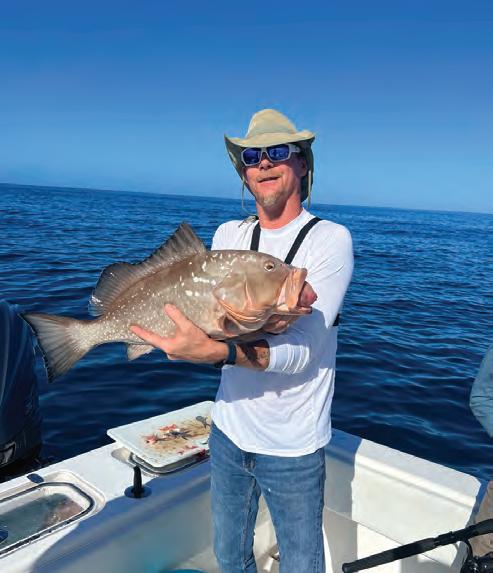
Daniel Naylor with a nice offshore grouper.
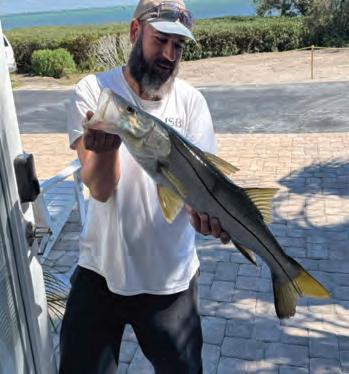
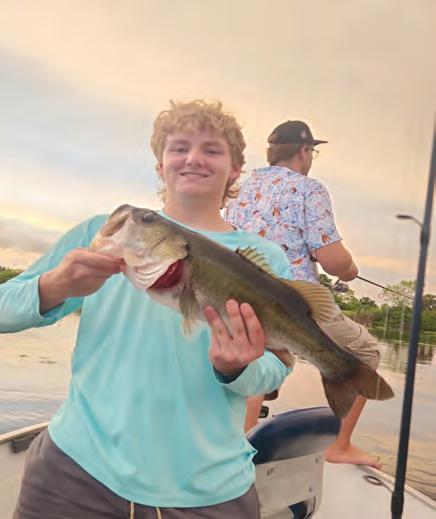
Matthew Fritsche showing off another lunker!
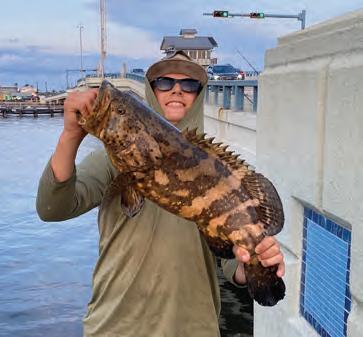
Cameron Gaddy shared this nice grouper, catch-n-released.
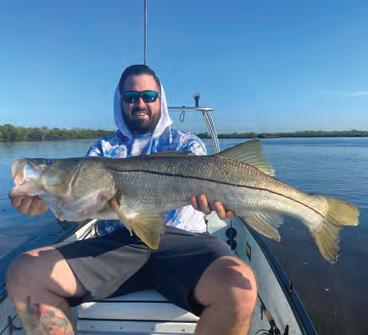


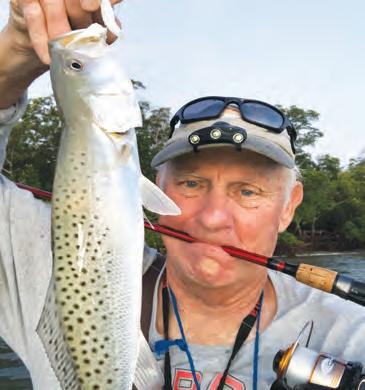
Colton
showing off his latest catch, 2 lbs and 15 inches.


Landon James(r) stepdad Bryan Zeller(l) caught this cutie under the Sanibel Causeway Bridge.
Ryan Holan caught this stud in Estero Bay, first cast of the morning.
George Peters w/ a nice seatrout from Estero Bay.
Jose Rodriguez w/ a nice snook caught in Long Boat Key, FL
Aiden had a blast fishing the canals with his Grandpa!

Throw Yourself a Bone
The very best hunting knives possess a perfect balance of form and function. They’re carefully constructed from fine materials, but also have that little something extra to connect the owner with nature. If you’re on the hunt for a knife that combines impeccable craftsmanship with a sense of wonder, the $79 Huntsman Blade is the trophy you’re looking for.
The blade is full tang, meaning it doesn’t stop at the handle but extends to the length of the grip for the ultimate in strength. The blade is made from 420 surgical steel, famed for its sharpness and its resistance to corrosion.
The handle is made from genuine natural bone, and features decorative wood spacers and a hand-carved motif of two overlapping feathers— a reminder for you to respect and connect with the natural world.
This fusion of substance and style can garner a high price tag out in the marketplace. In fact, we found full tang, stainless steel blades with bone handles in excess of $2,000. Well, that won’t cut it around here. We have mastered the hunt for the best deal, and in turn pass the spoils on to our customers.
But we don’t stop there. While supplies last, we’re including a pair of Stauer Flyboy Optics® Sunglasses— a $99 value —FREE with your purchase of the Huntsman Blade.
Your satisfaction is 100% guaranteed. Feel the knife in your hands, wear it on your hip, inspect the impeccable craftsmanship. If you don’t feel like we cut you a fair deal, send it back within 30 days for a complete refund of the item price.
Limited Reserves. A deal like this won’t last long. We have only 1120 Huntsman Blades for this ad only. Don’t let this beauty slip through your fingers. Call today!




Flyboy Optics® Sunglasses a $99value


What Stauer Clients Are Saying About Our Knives
“This knife is beautiful!” — J., La Crescent, MN
“The feel of this knife is unbelievable...this is an incredibly fine instrument.”
— H., Arvada, CO


please call
Proposition 65 regulations before




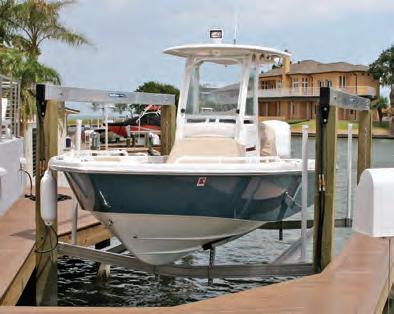


Durable boat lifts expertly designed with Florida in mind.
ShoreStation hydraulic boat lifts are a reliable choice for coastal residents and boating enthusiasts alike. Their strong construction, made with corrosion-resistant materials, allows them to withstand harsh environmental conditions, including sun, storms, and saltwater damage. ShoreStation provides a steadfast solution for protecting waterfront investments, o ering peace of mind to owners in the Sunshine State.
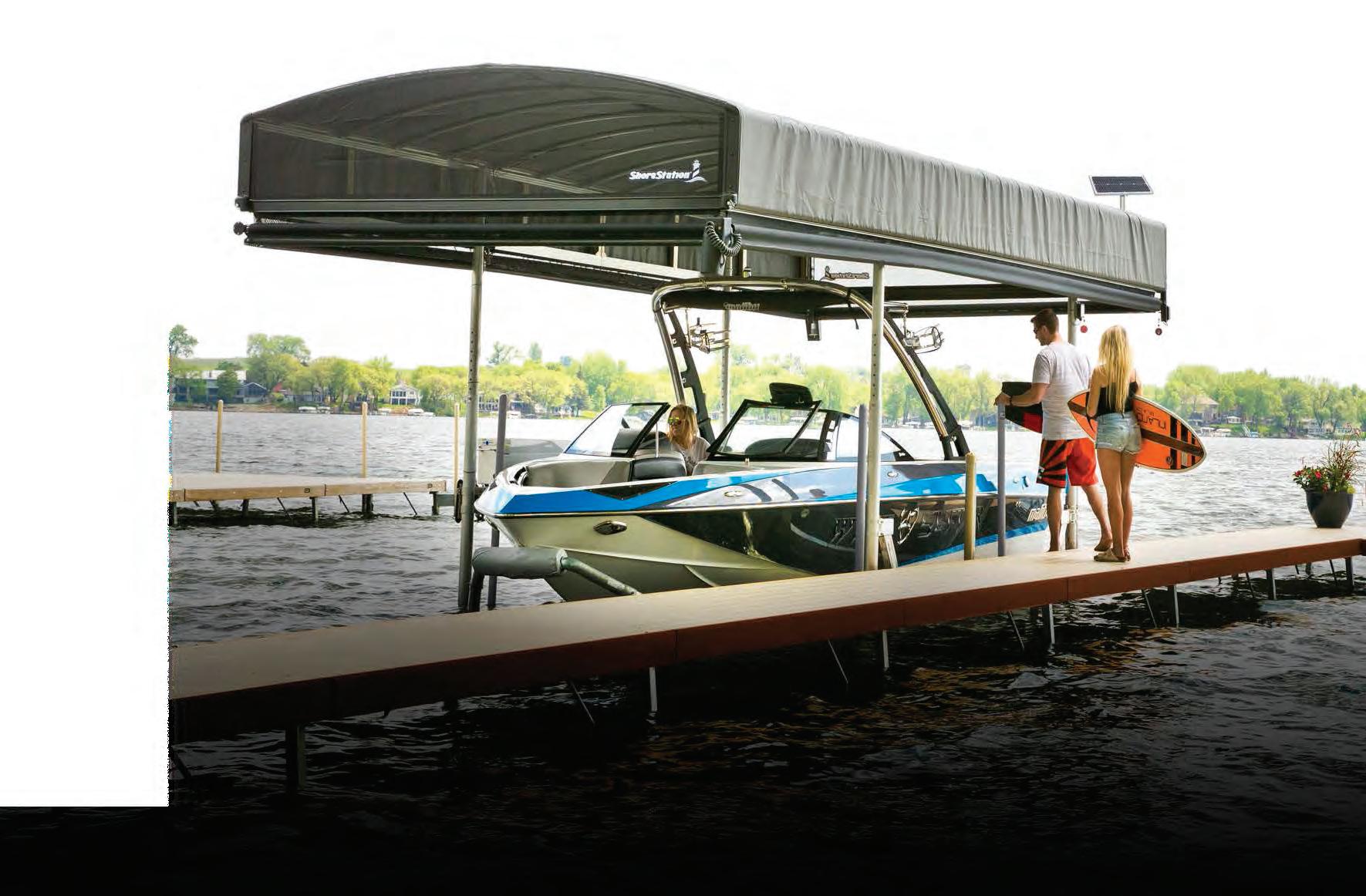



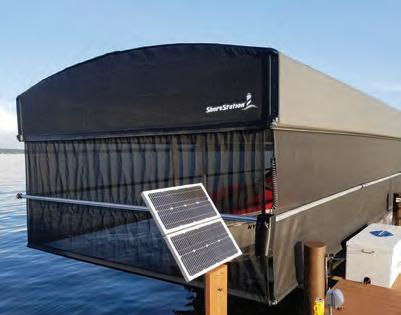
Under Deck Boat Lift
Four Piling Boat Lift
Deck Over Boat Lift

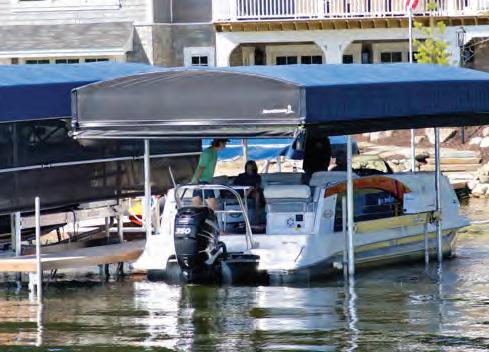

REVOLUTION™ Series Canopy Cover
Equipped with exceptional weather resistant fabric and breathable SunTex 80 woven mesh ends for maximum protection and durability,

Quickly Secures Boat
Made from the highest quality materials, our innovative hydraulic boat lift is one of the fastest and safest lifts on the market today. When you have a hydraulic lift, there’s no need to worry about wind and waves getting in your way. This lift will give you con dence to safely land and secure your boat in less-than-ideal conditions.
Solar Battery Charging System
Never miss another moment on the water. Power your lift with clean, free solar power. Our speedy 20 watt charger features solar regulator drainage protection, saving your battery from permanent damage caused by overcharging.



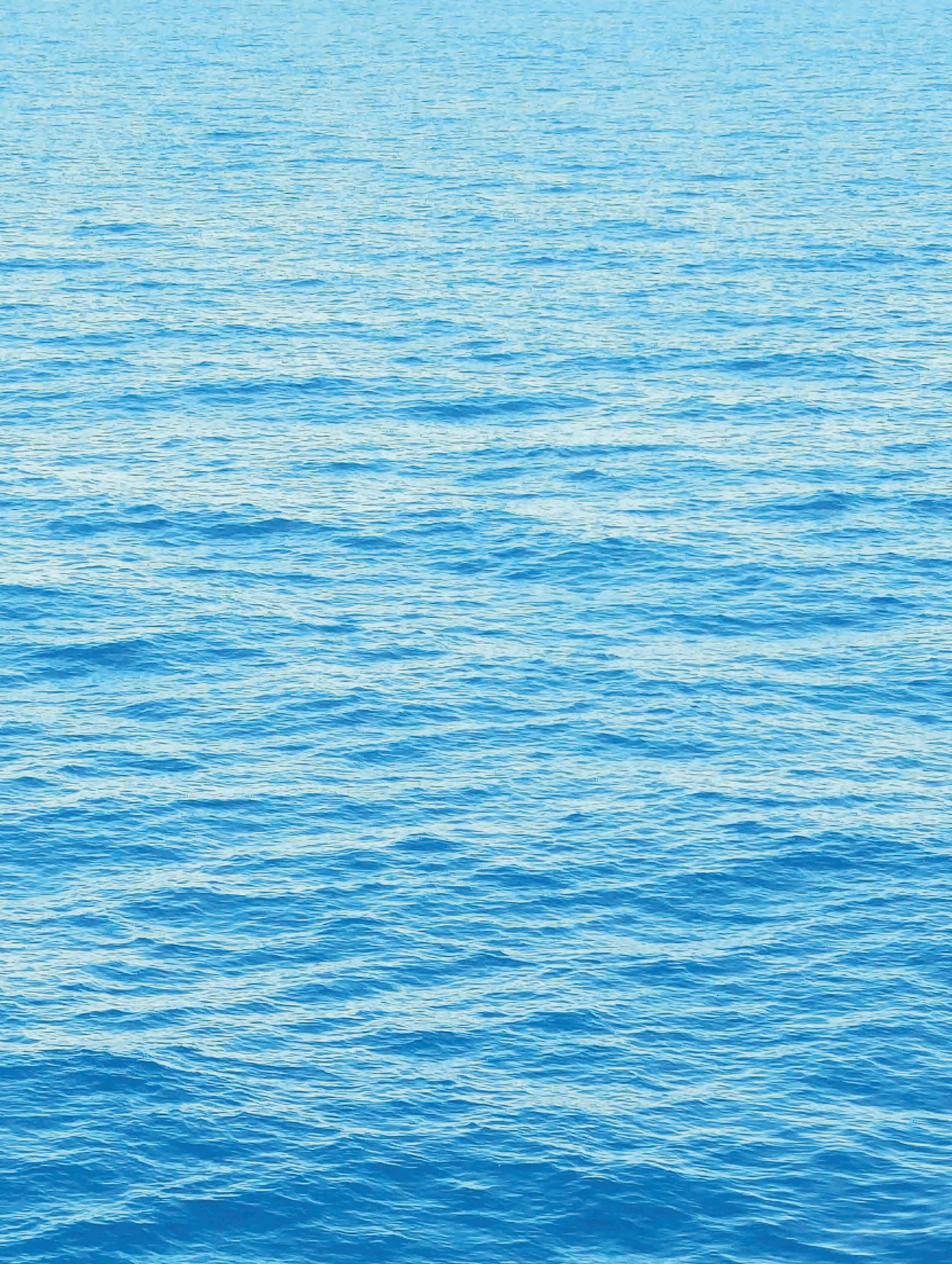
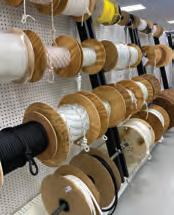

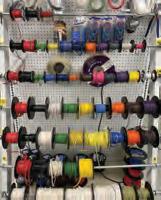


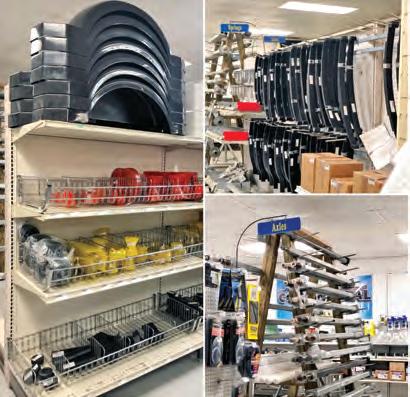





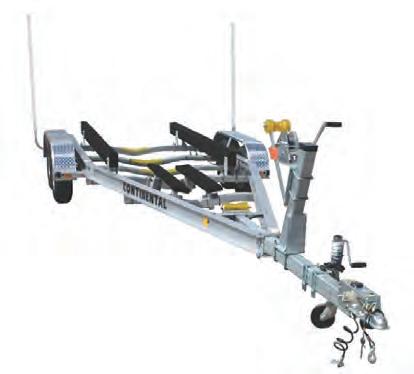
















GO DEEP(ER)
Tim Barefoot
I’ve written quite a few articles on the tactics I used to catch grouper on the edge and inside the edge with bait in a decoy jig in the past, but now is a good time to push out a little further to see what’s up in the 350 to 500+ foot depth range. !is type shing may require you to change gears on your thought process and/or tackle, but you may be pleasantly surprised with the results.
First o , you will want to use a spinning rod with backbone and a lighter braided line. I’m not going to suggest any tackle manufacturer for rod, reel or line, but the line in the jig is the most important part of this equation. I know this sounds crazy, but you can get away with braid, a small is 20 pound test connected to a short 6-foot shot of uorocarbon leader, and catch the big boys from the deep. When you sh ledges, wrecks and rock homes, you have to use heavier tackle to coerse the grouper and big snapper out of the structure, but in the deep the sh tend to congregate around bait, and there is very little structure out there for them to get you in. !e bait out there consists primarily of squid—the universal bait for all the seven seas of this planet, period. Squid are present at all depths, from the surface at night to their migration back to the deep by day; just ask any sword sh. Ha!
!is deeper water shing may also require a change in electronics. In order to mark the sh and bait you need to have enough power to send the signal and

get a return. You can run all over creation trying to mark sh or bait in vast areas of water, but having the correct electronics will assist in this greatly. Once you start marking the blue-speckled screen on the bottom, you know you’re in squid. I’ve always said it, but when you nd the bait you found the sh. Once you mark the bait, more than likely, it will be squid and it’ll be time to drop in the correct jig.
I’ve made several videos using the 4 ounce (so plastic) Squid Jig, but I’ve also had a 6 oz. size made. A 10 inch mold cra ed squid, trimmed properly, can be very e ective at times. Fish like a champ on the 6 ounce headed down deep. !e jig stays perfectly horizontal and jumps like the 4 ounce, and everything down there sucks it up. I’ll be publishing videos soon on this.

I’ll close with this: nd the bait and you’ll nd the sh...using the correct electronics. Once you nd the bait/ sh, drop in the correct jig that imitates what they eat on a daily basis and you’ll get the bite. And one more very important note. Pay close attention to the MPAs, which are marine protected areas, and seasons you can sh in them. You need to be well informed of where you are when you nish shing and what you could put in the cooler. You have to play by the rules.
Check out Tim Barefoot’s YouTube channel and website, barefootcatsandtackle.com.
CAST LURES IN A MITZI TOURNAMENT 17
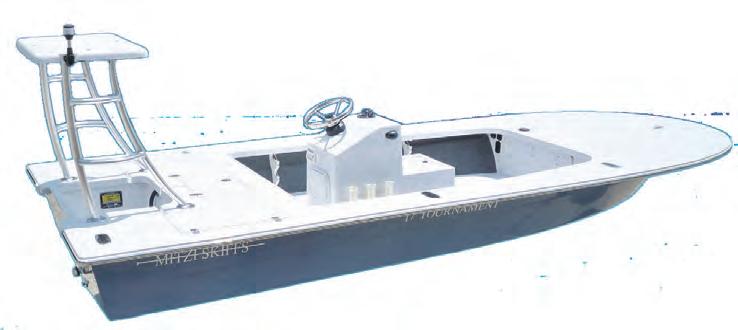




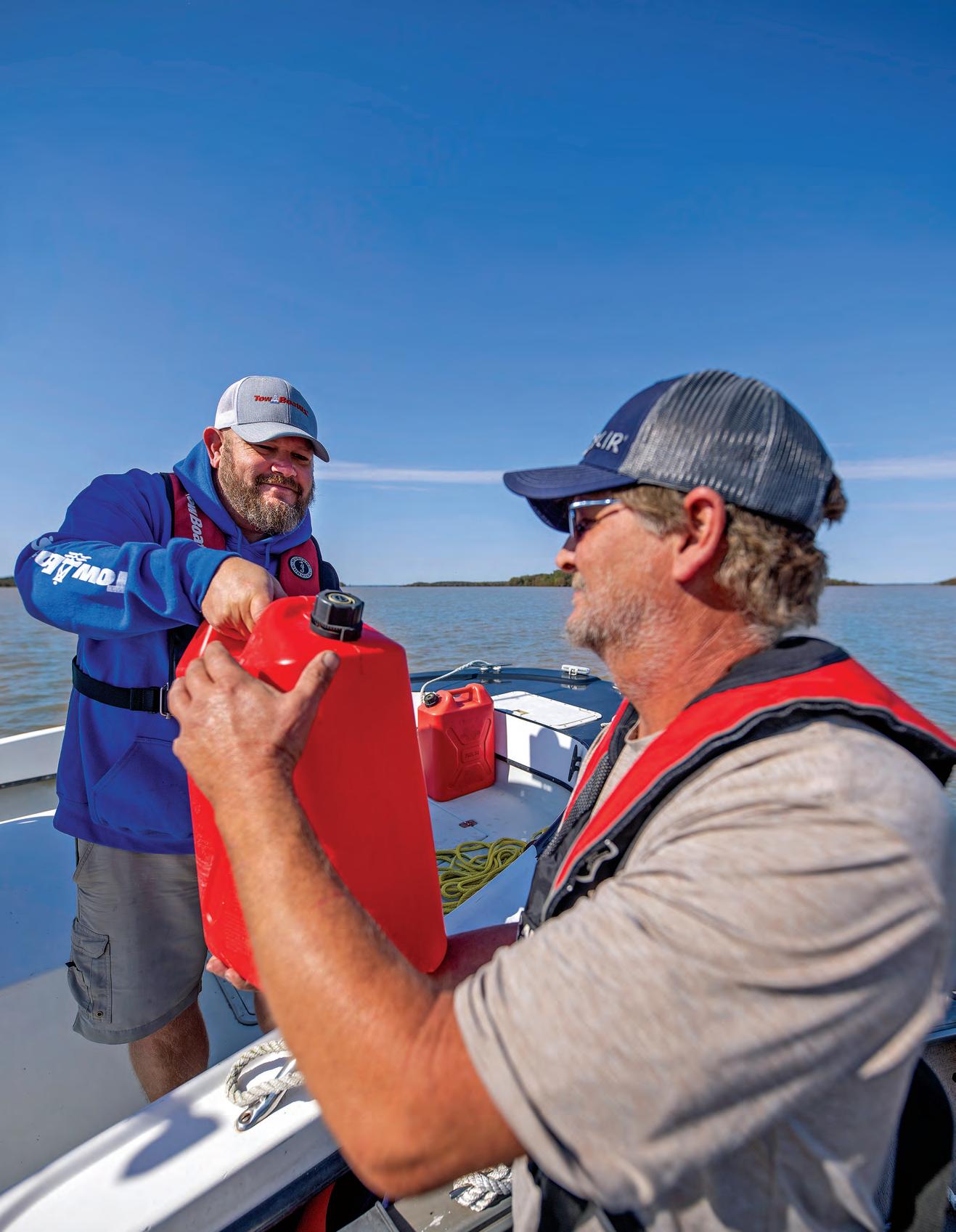
EMPTY TANK?








TIPS FROM A PRO
FISHING A BIG WORM
hile there are many ways to target bass, one method consistently stands out— shing with a big worm.

Worm shing may not be the ashiest technique, but it allows you to present your bait from a distance and work it slowly—ideal for tempting big, cautious females that ignore faster presentations.
One of my go-to techniques is casting a Texas-rigged stick bait. It’s a common tactic, but many anglers waste time casting at dead water. I focus on high-percentage areas, such as isolated patches of grass or lily pads. Even when the sh aren’t visible, they o en hold tight to this type of cover. Similar results can be achieved by targeting wood or rock. Make multiple slow retrieves through these areas for best results.
I prefer a larger 6” stick bait in dark colors like black and blue tip. For weights, 1/16 or 1/8 oz keeps the presentation subtle and natural. I recommend 17–20 lb uorocarbon, which o ers strength without sacri cing stealth—braid can be too intrusive here.
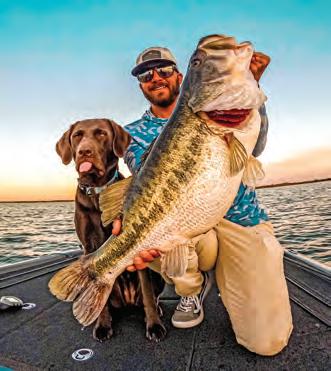
To cover more water and locate active sh, I switch to a big speed worm. While it’s a popular technique in Florida, where I predominantly sh, it works well across the country. !e bait’s vibration drives bass crazy, making it an excellent search tool. Once I nd sh with this method, I slow down and ne-tune my approach with other techniques. For stained water, I like darker colors like junebug; for clearer water, I use green pumpkin with ake. Weight ranges from 1/8 to 1/4 oz depending on depth and wind. Fluorocarbon in the 15–17 lb range is ideal here too.
Another e ective presentation is the wacky rig. It’s a more subtle approach and shines in pressured waters. Like with the Texas rig, I cast this bait weightless to isolated cover. I use lighter line and a spinning setup—typically 10–15 lb leader—adjusting based on cover density. In dirty water, I stick to dark colors; in clearer water, I go with more natural tones.
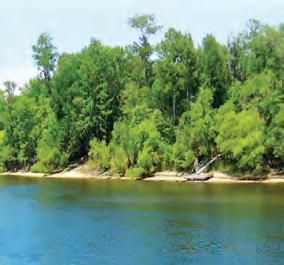



Flipping a worm is another technique I use, especially when there’s a lot of heavy cover. While not as stealthy, ipping allows you to place the bait precisely where other rigs can’t reach. I use large Senko-style baits, braided line, and heavier weights (3/8 to 3/4 oz) to penetrate thick vegetation. It’s perfect for pads, long banks, and heavy wood or grass. !e key is to sh slowly and thoroughly, putting your bait where others haven’t.
Rod and reel setups vary slightly depending on the technique. For most casting and ipping styles, I like a longer rod—around 7’6”— with medium-heavy to heavy action. !e 13 Fishing Omen Series has a few ideal models. I pair these with a high-speed baitcasting reel like the Concept A 7.5:1, which helps pull sh out of thick cover quickly.
For the wacky rig, I downsize to a 7’3” medium-heavy spinning rod. It o ers enough backbone to move sh but also provides the sensitivity and exibility needed when using lighter line. A spinning reel with a smooth drag is crucial. I recommend the 13 Fishing Axum, which o ers the control and power necessary for nesse shing around cover.
!ese worm shing techniques consistently produce. Whether you’re casting to isolated cover, ipping into thick vegetation, or working a speed worm through open water, there’s a big bass out there waiting to bite. I’m excited to put these methods to work—and hope they help you land some giants too.
Tyler Woolcott is a professional tournament angler and guide. Check out his website at www.tylerwoolcott shing.com.
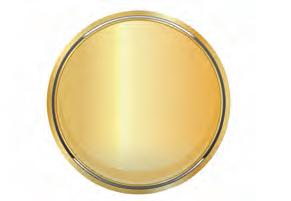

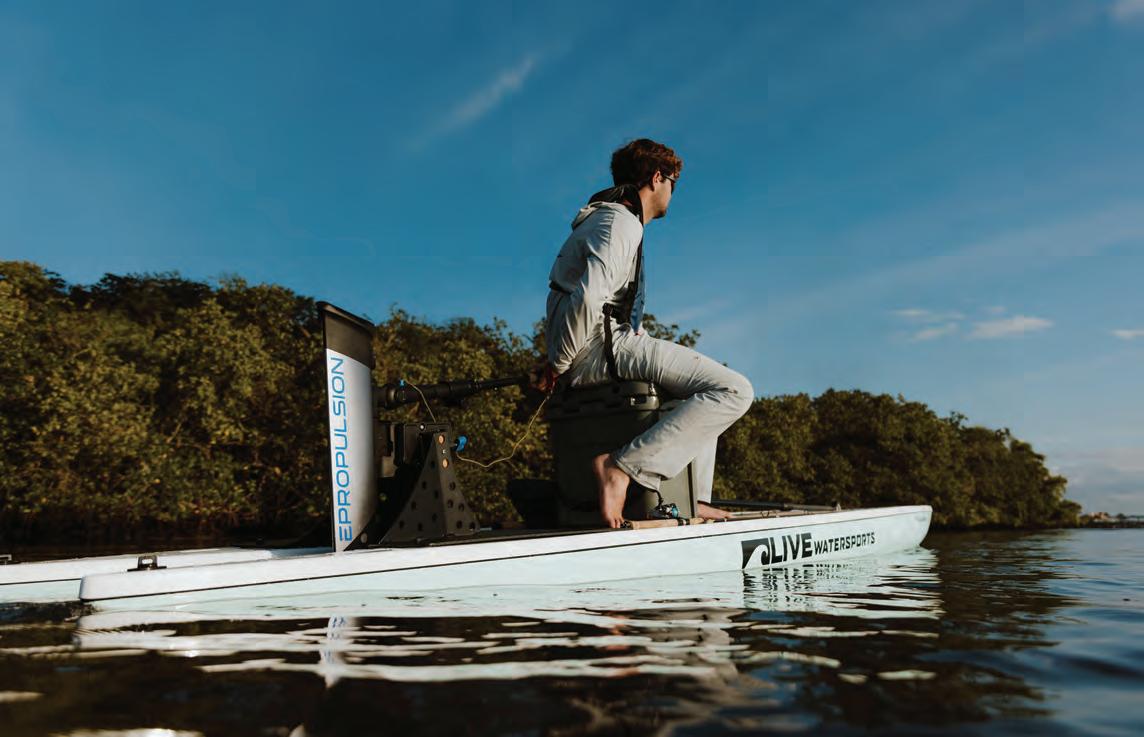






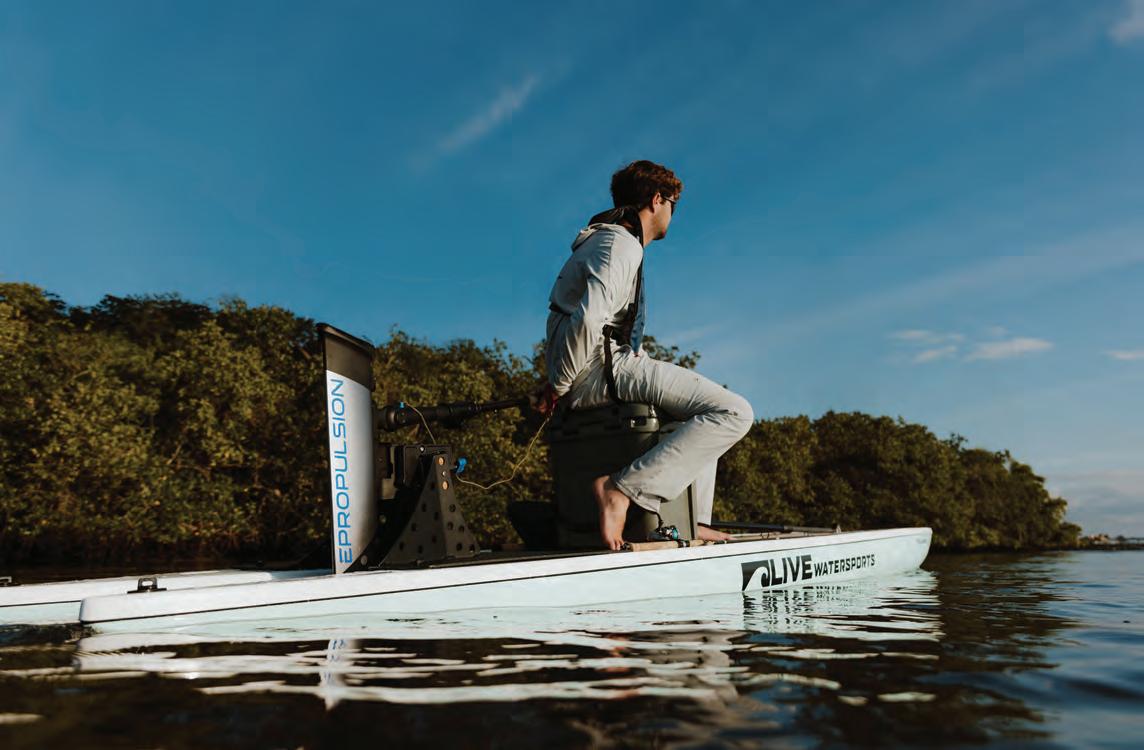













WHY BUY NEW WHEN YOU CAN RENEW?!?


STATE RECORD FISH TITLE BROKEN THREE TIMES THIS YEAR!
For the third time in less than a year, Georgia has a new freshwater !sh state record spotted sun!sh!
Josh Forsythe of Homerville, GA (Clinch County) landed the newest record catch of 0 lb, 13 oz on May 5 from the Suwannee River. is almost 9-inch catch beats the previous state record tie of 0 lb, 12 oz, according to the Georgia Department of Natural Resources’ Wildlife Resources Division (WRD).
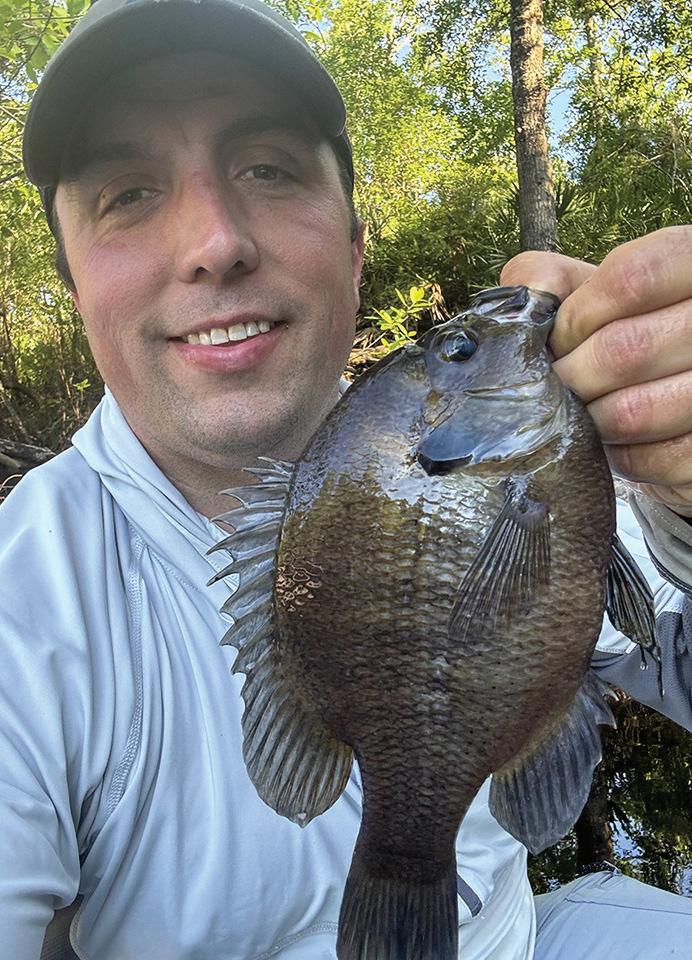
“My 5-year-old daughter and I were !shing for bream on one of my favorite rivers, the Suwannee, when I caught this spotted sun!sh,” said Forsythe. “I have been !shing this river for more than 15 years and it is one of my favorite places to !sh for good-sized bream, especially spotted sun!sh. I recommend waiting until river levels are below 4-foot and using top water bugs to catch giants, but a beetle spin or even a cricket or a worm on a cork will work.”
Spotted sun!sh are found in the Ocmulgee, Oconee, Altamaha, Ogeechee, Ochlockonee, Suwannee, St. Mary’s, Satilla and Savannah River basins. When angling for them, WRD recommends using worms, crickets, small spinners, ies and popping bugs.
“Maybe hearing about that state record tie for spotted sun!sh !red up some folks to land a new record – and we love to see it,” says Scott Robinson, WRD Chief of Fisheries. “Are you the next state record holder? Georgia has the best variety of angling opportunities across the state so Let’s Go Fish Georgia!”






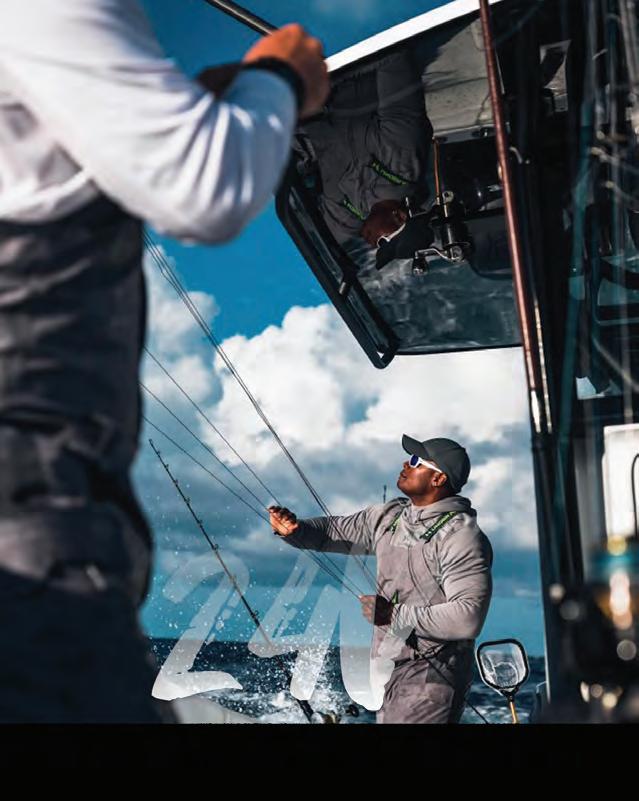



NC CERTIFIES NEW VERMILION SNAPPER RECORD
North Carolina‘s Department of Environmental Quality’s Division of Marine Fisheries recently established a new state record for Vermilion Snapper (Rhomboplites aurorubens).
Colby Shaw of Newport caught the 7-pound, 4-ounce sh o Morehead City on April 18, 2025. !e previous state record was 6-pounds, 9-ounces landed out of Ocean Isle in 2009.
Shaw was shing in his own vessel, o shore south of Beaufort Inlet when the sh struck his cut bait. Shaw made quick work of reeling in his state record sh, landing it using his Shimano rod and reel with 65-pound braid.
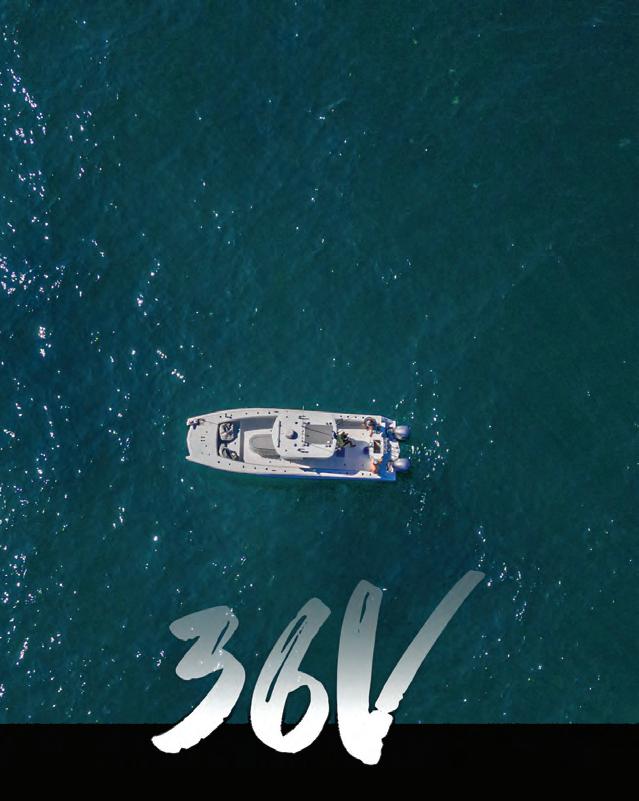




Shaw’s sh measured 23.5-inches fork
to the fork in the tail) and had a 17-inch
sheries sta at the Morehead City Headquarters
!e






Division of Marine Fisheries.
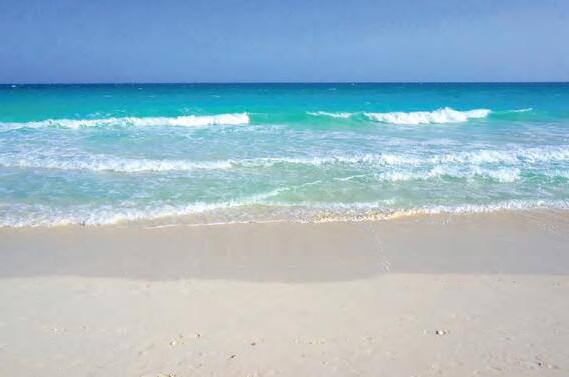













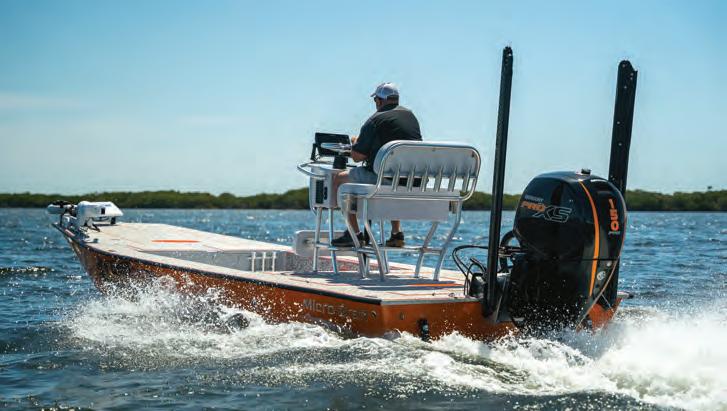

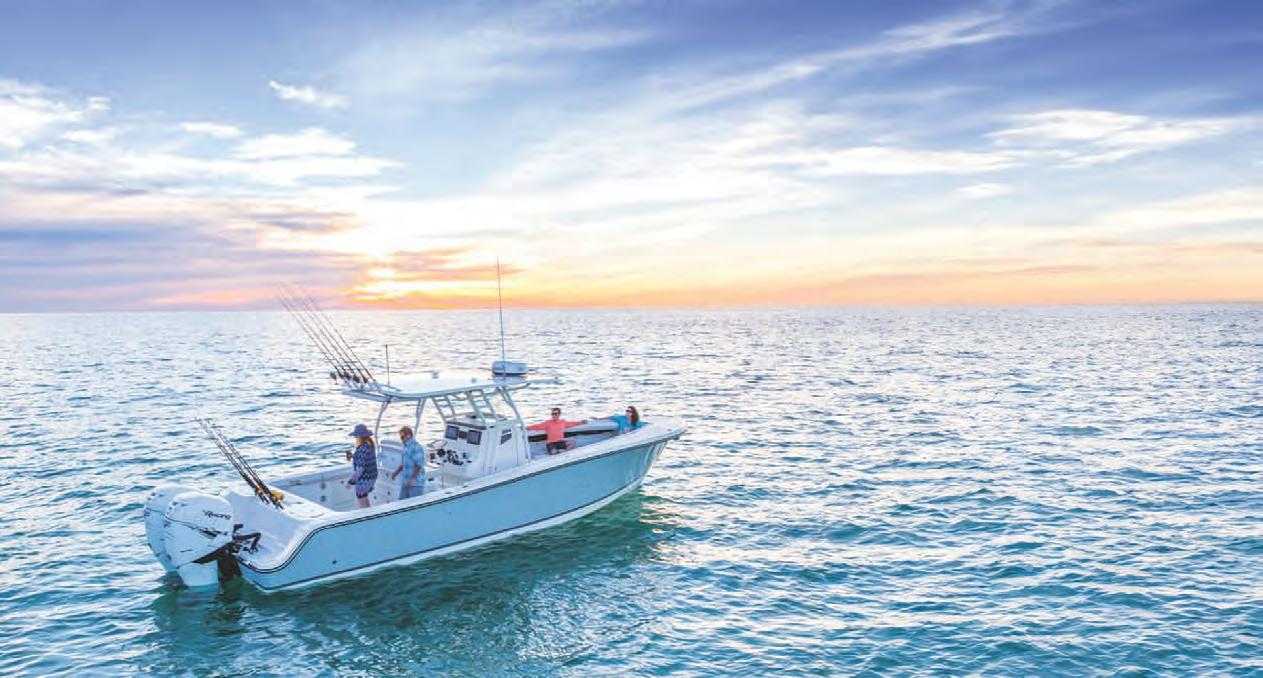


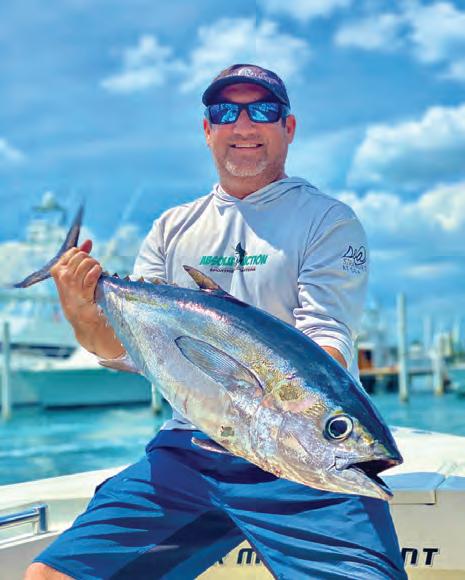



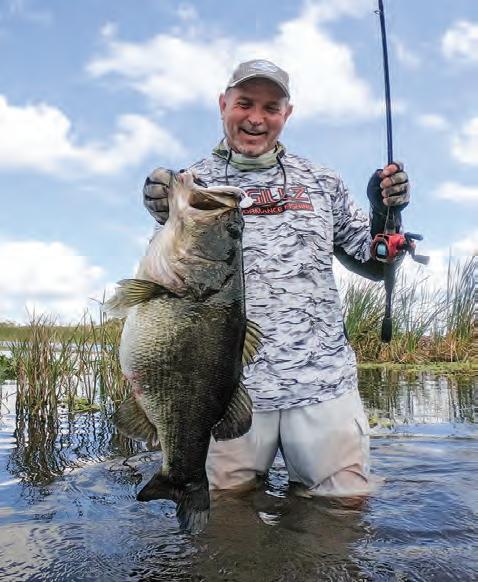

Bill Dance Signature Lakes O er Impactful Improvements to Tennessee’s Fishing Waters
By David Haggard & Heather Lose
Representatives from Tennessee Wildlife Resources Agency, Tennessee Department of Tourist Development, and Tennessee State Parks celebrate the ribbon cutting of the Bill Dance Signature Lakes project at the Bassmaster Classic in Knoxville on March 25, along with the project’s namesake. Photo Courtesy of the Tennessee Department of Tourist Development:



